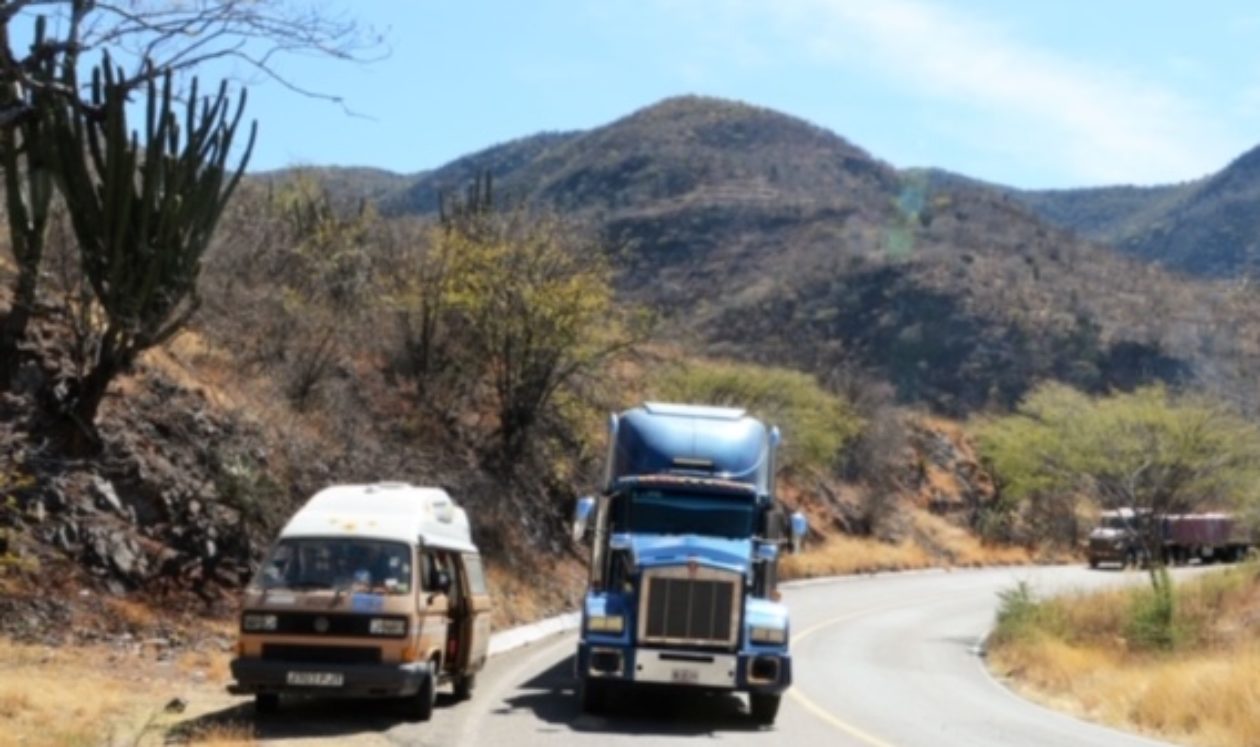This week we experienced the food, fino and flamenco of Andalusia, staying three days in Seville – still not enough time to do the city justice – before heading south to Jerez.
We saw some curious sights on the way – the pilgrimage village of El Rocio in Huelva where the sand-covered streets are designed for horses, not cars, and the red water of the Rio Tinto river – once the centre of a massive British-owned copper mining operation.
The journey down to Jerez was the longest single haul we’ve done in the van so far on this trip. It was about 200 miles, sometimes up those long, steadily rising motorway inclines we – and the van – hate so much because there’s nowhere to escape if the needle on the temperature gauge starts edging dangerously into the red.
But Stuart’s new extra-cautious driving strategy of sticking on the hazard lights and taking these hills really, really slowly is working so far. Hopefully we can keep going without any dramas until we get to the garage in Gibraltar where we’ve lined up a mechanic to give Molly the once over before facing the Atlas Mountains in Morocco very soon.
And the highlights this week:
Exploring Seville by day:
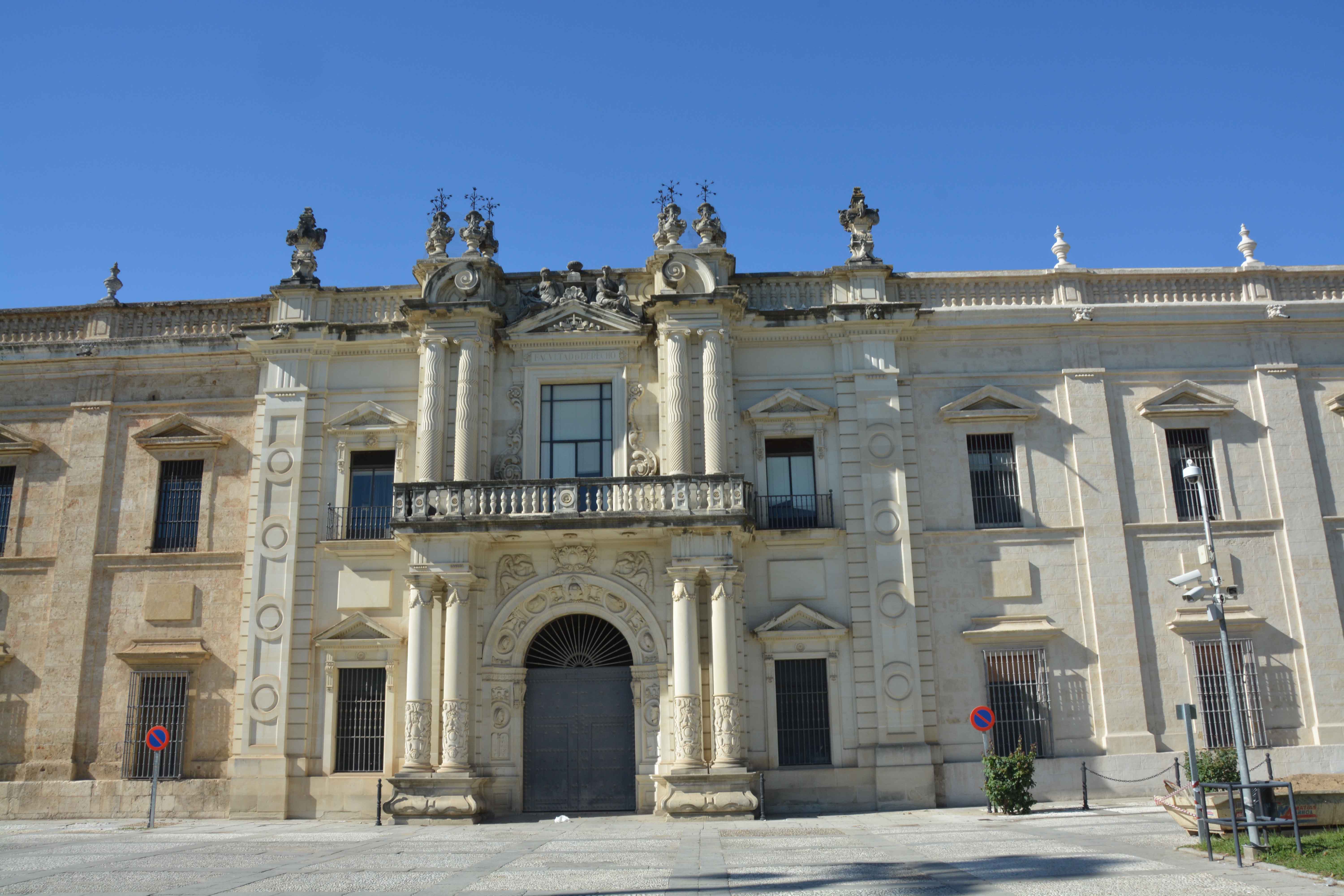
Our bus into Seville dropped us up the road from this building. The photo doesn’t capture it’s size or splendour. It’s not what you expect a cigarette factory to look like.
But up until the 1950’s, this is what it was – the Real Fábrica de Tabacos which was built in the 1700’s and where at its peak around 4,000 all-female “cigarreras” worked, preparing and rolling the tobacco leaf shipped up the Guadalquivir river from the United States and turning it into cigars and cigarettes.
If that is sounding familiar, it’s the factory which inspired Bizet to write the opera ‘Carmen’. His fictional heroine is based on one of the feisty, free-spirited tobacco workers in Seville who have been described as pioneers of trade union rights. The rights they negotiated including an agreement they could bring their babies to work. Special cradles were provided so they could rock the baby and continue working.
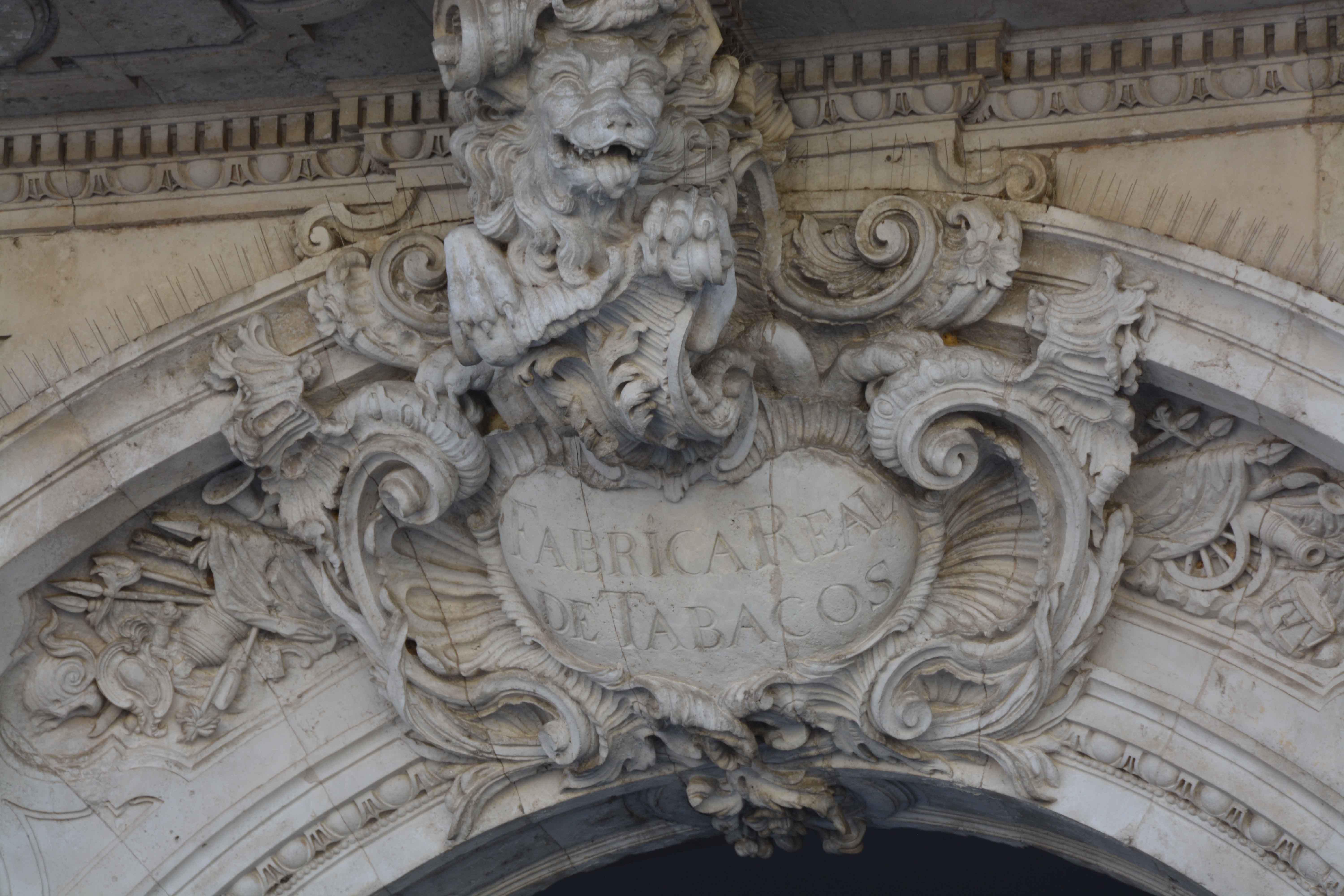
The former factory is now part of Seville university and we cut through its corridors, now dotted with ‘No Smoking’ signs to get onto the street and make out way to Plaza de Espana.
One of the guidebooks described this square as one of the most beautiful public spaces in Spain.
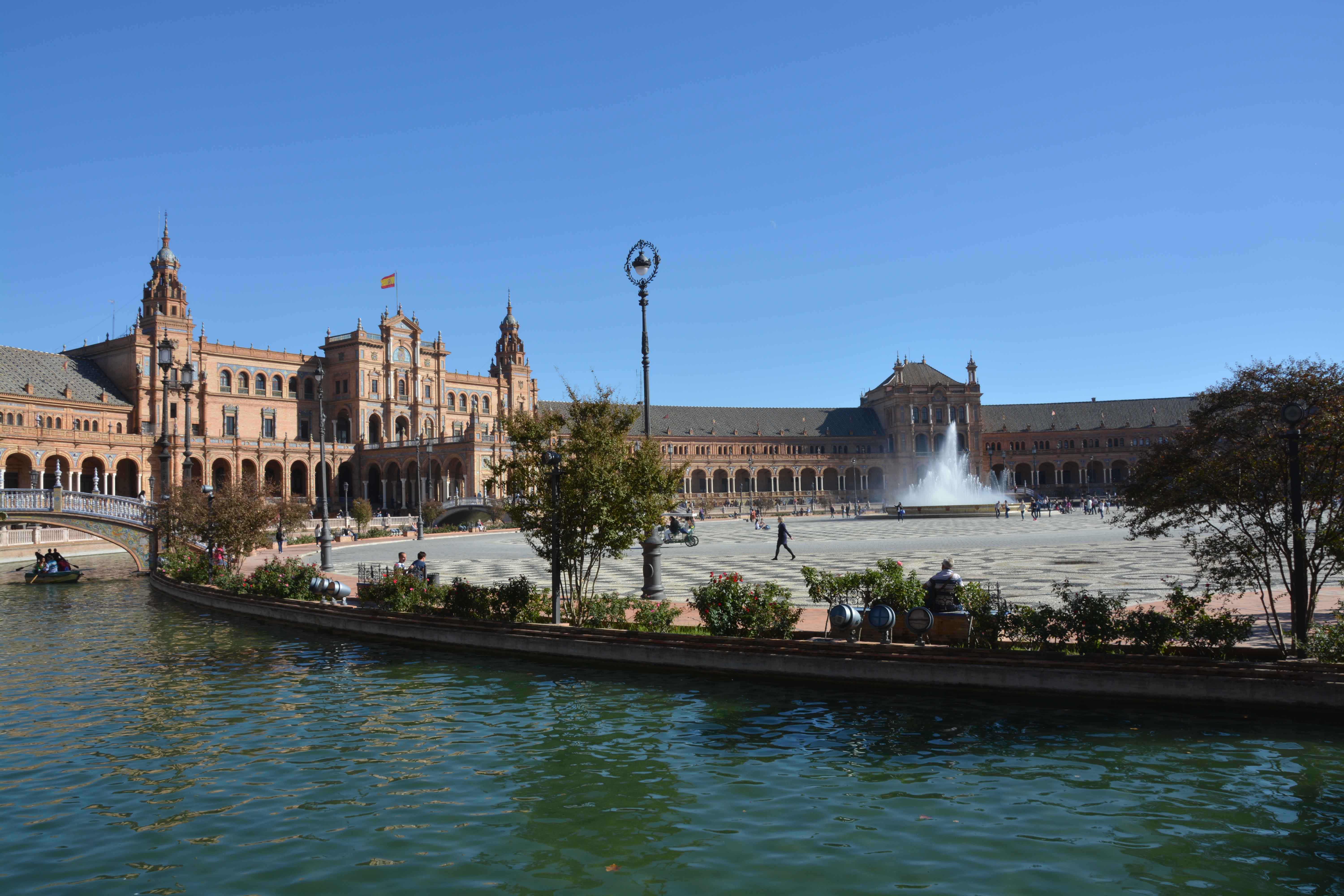
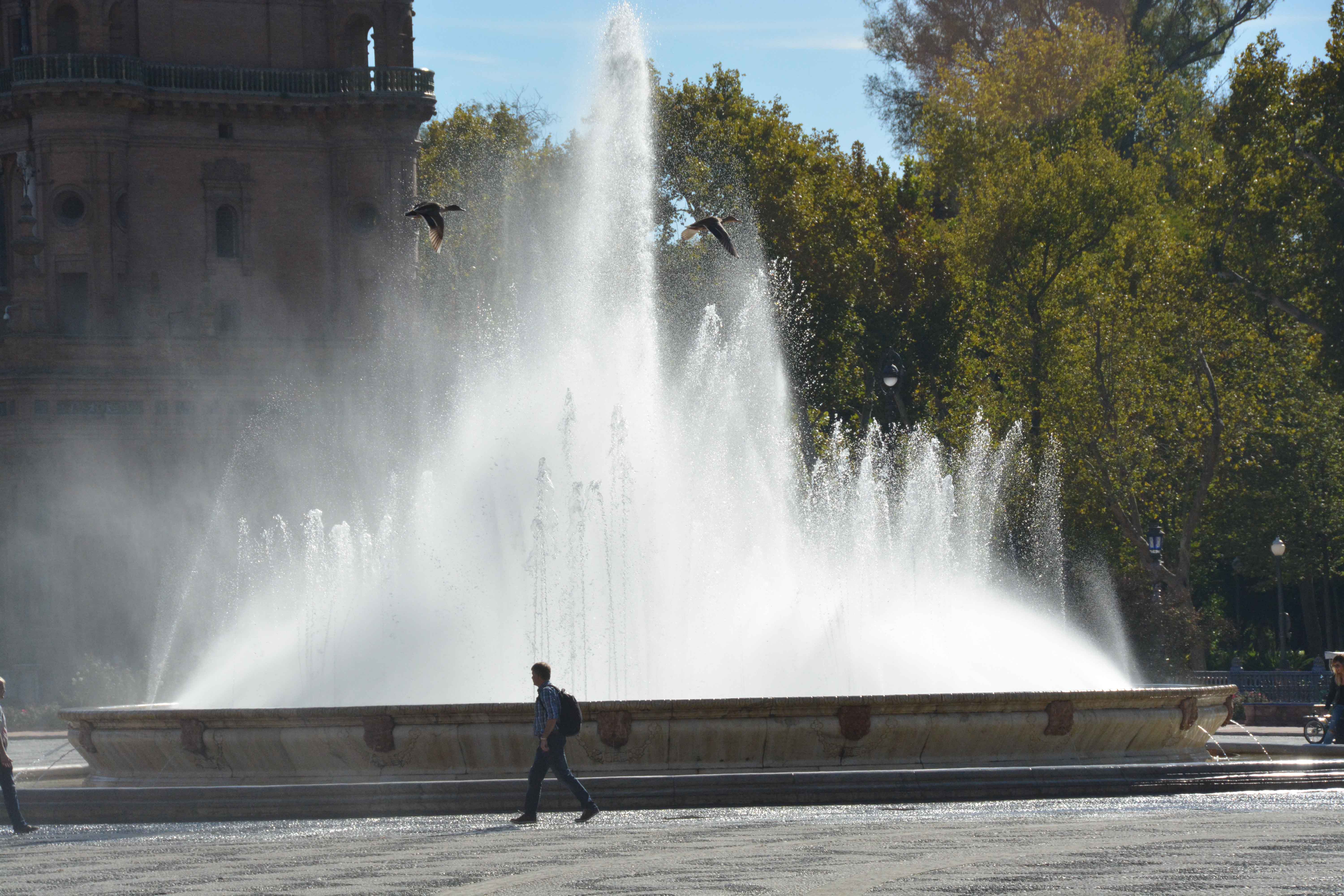
Stuart, our resident public realm guru, had no argument with this description.
The elaborately decorated Plaza which, with terrible timing, was built to host the Ibero-American Exposition in 1929 just before the Wall Street crash. It was a wonderfully relaxing space to spend a sunny Sunday afternoon.
We joined the families strolling aimlessly round the water fountains and sunned ourselves on one of the colourfully tiled benches which frame the square. The painted ceramic azulejos tiles depict scenes from all over Spain so as recent arrivals from La Mancha, we had to choose one which depicted our friend Don Quixote…
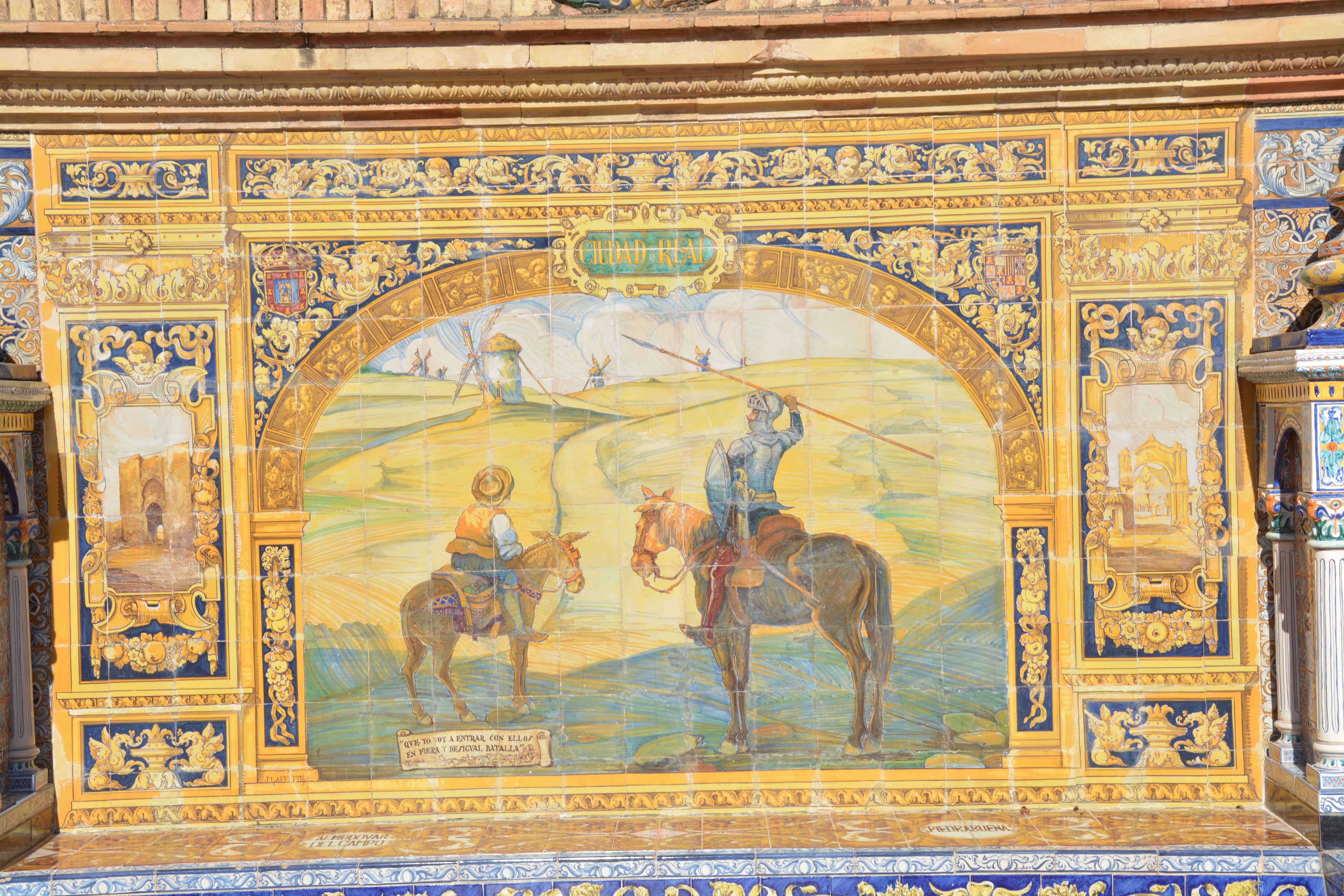
But our public realm guru was less impressed with how they’ve used the space underneath Seville’s Las Setas ( the mushrooms).
That’s this enormous wooden construction.
That’s another public construction project built with terrible timing. It was due to open in 2007 but for many reasons, particularly technical ones – ‘See this design you’ve given us here? Looks really great guys but,em, it doesn’t work, can’t be built’ (ARUP)- it finally opened in 2011.
Standing underneath and looking upwards, the vast structure is astonishing. But, sez Stuart, the walk through it, housing some empty units and a cafe, had the look of a project that just ran out of ideas and money.
Yep – got it in one. When they eventually solved the technical problems, the ‘mushrooms’ opened massively over budget and at the tail end of Spain’s worst ever recession. So not much left in the coffers for even a couple of hanging baskets.
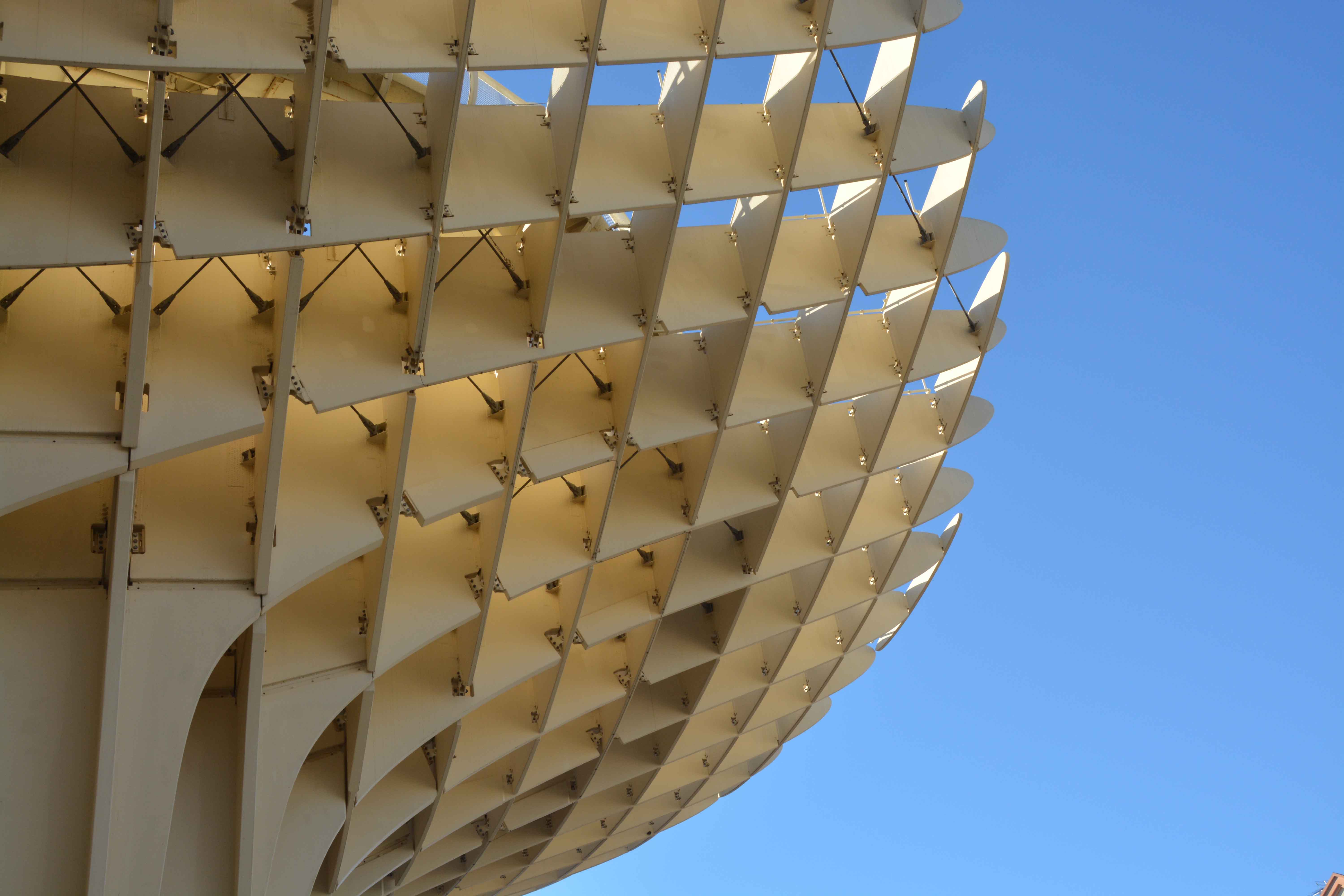
And then it had to be time for more tapas, and so we walked back through the narrow streets, interrupting this bride’s photo shoot.
We’ve stumbled into so many weddings in Spain! Actually what I’ve now discovered and find irresistibly fascinating to photograph (much to Stuart’s huge embarrassment) is that some of these wedding shoots are taking place a week or so ahead of the actual ceremony. So much for not letting the groom see the dress before the big day…
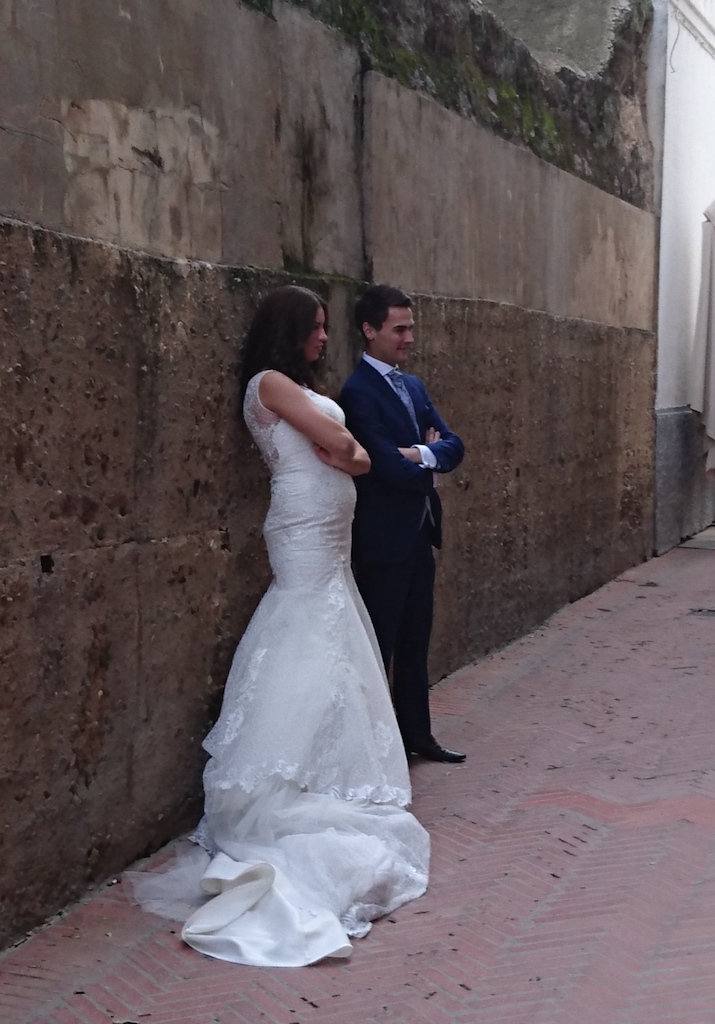
Anyway, we were on our way for tapas. We continued through streets lined with orange trees…
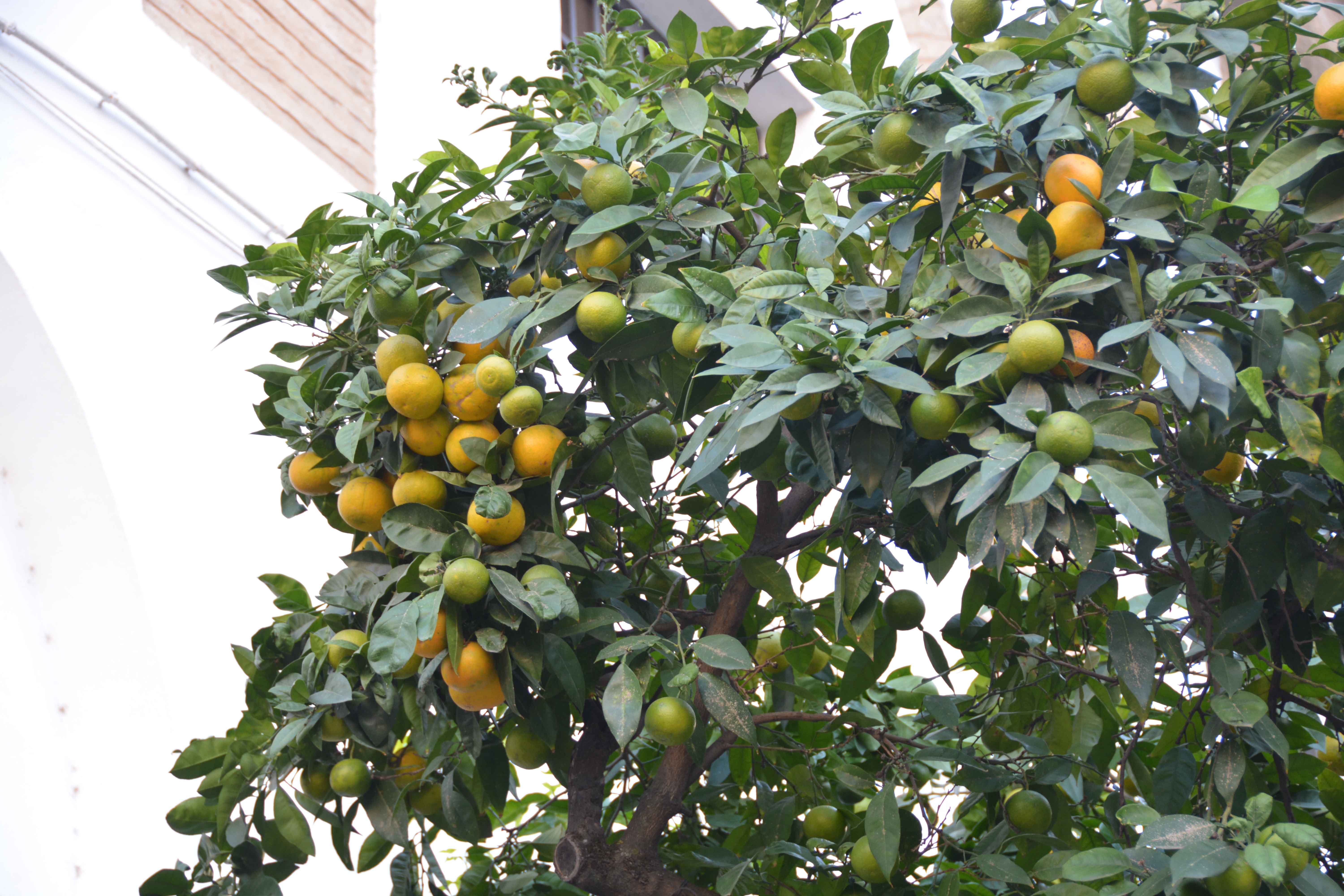
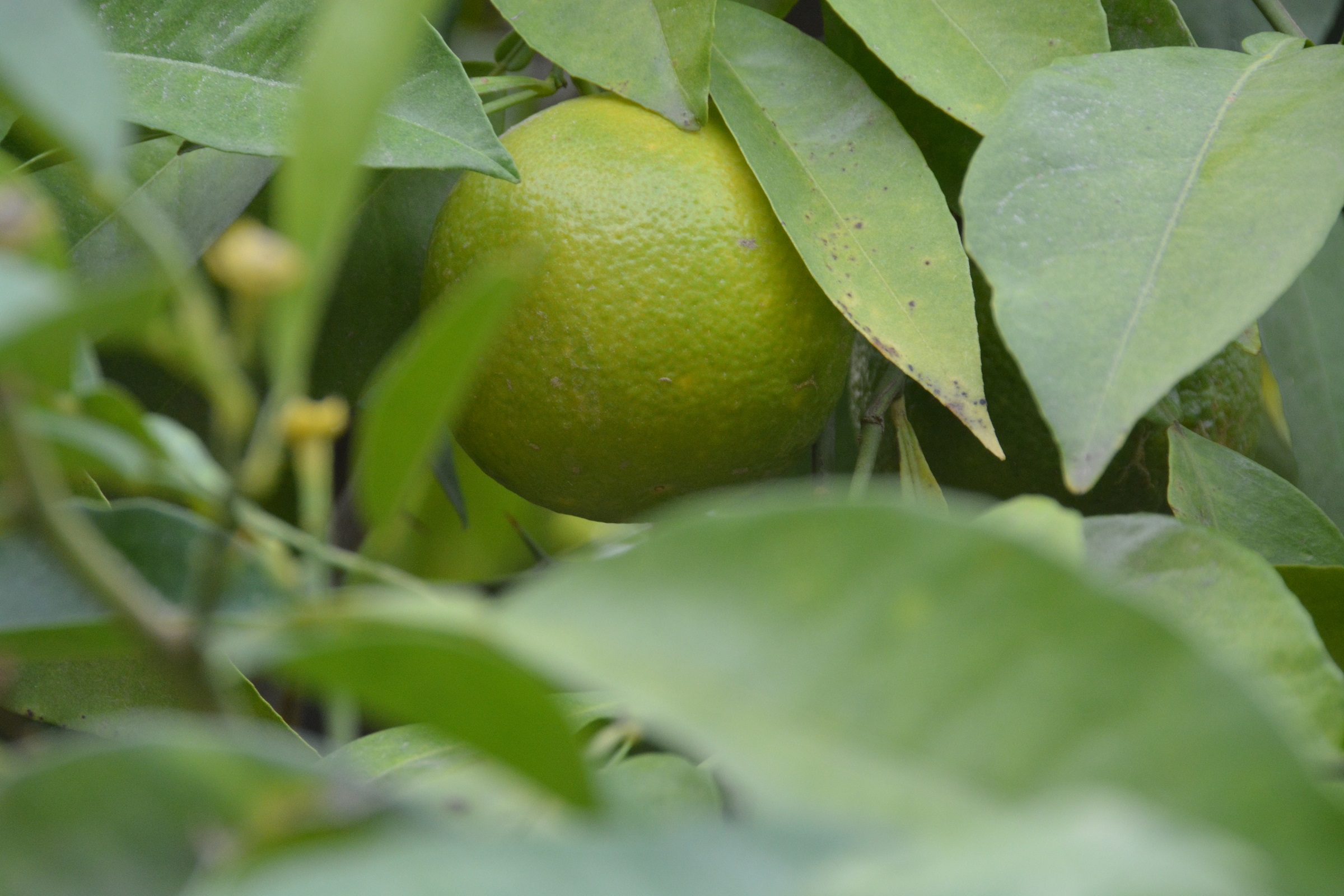
…and squares blooming with Bird of Paradise flowers …
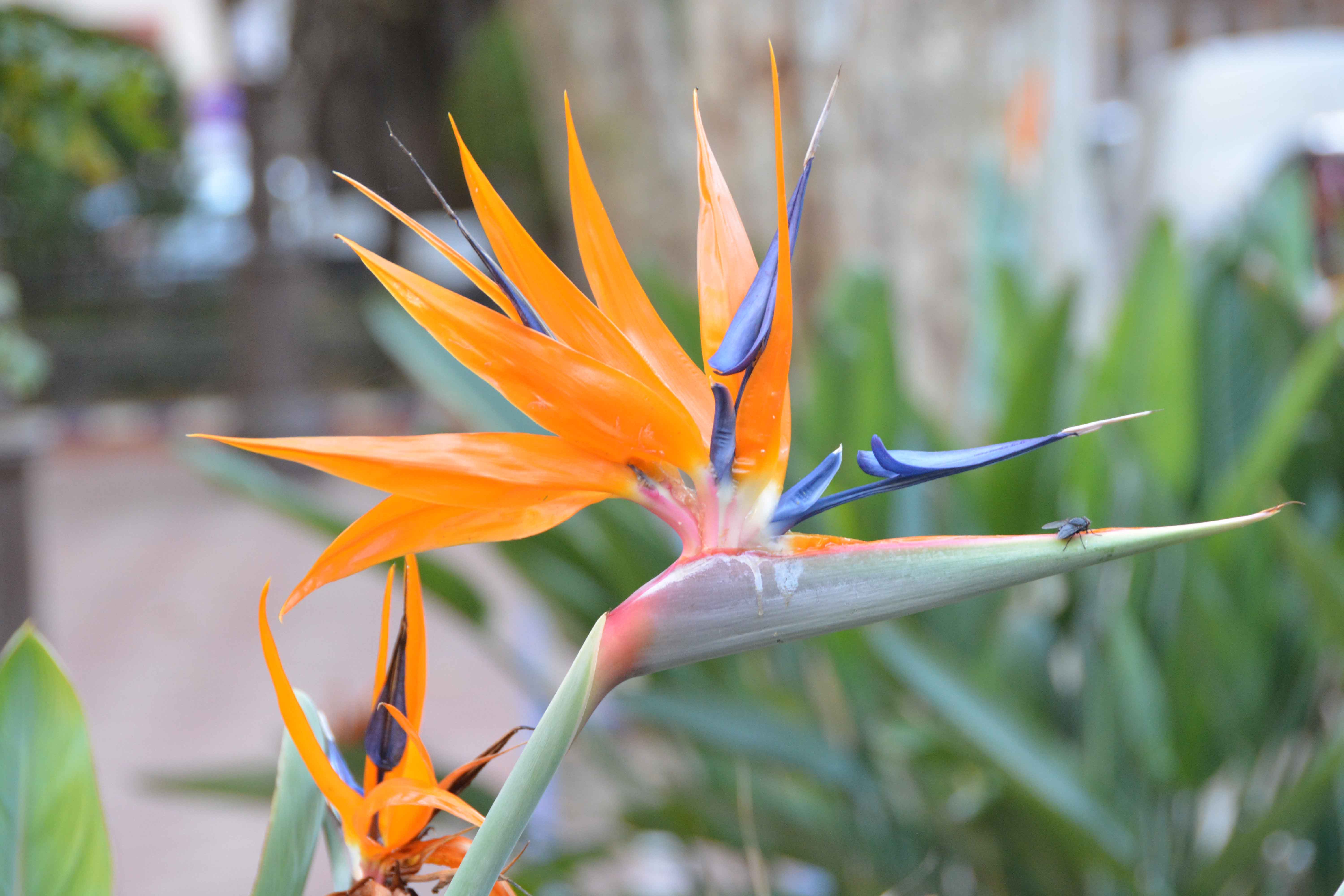
…including this one, clearly named after his number one success with El Lady in Redos…
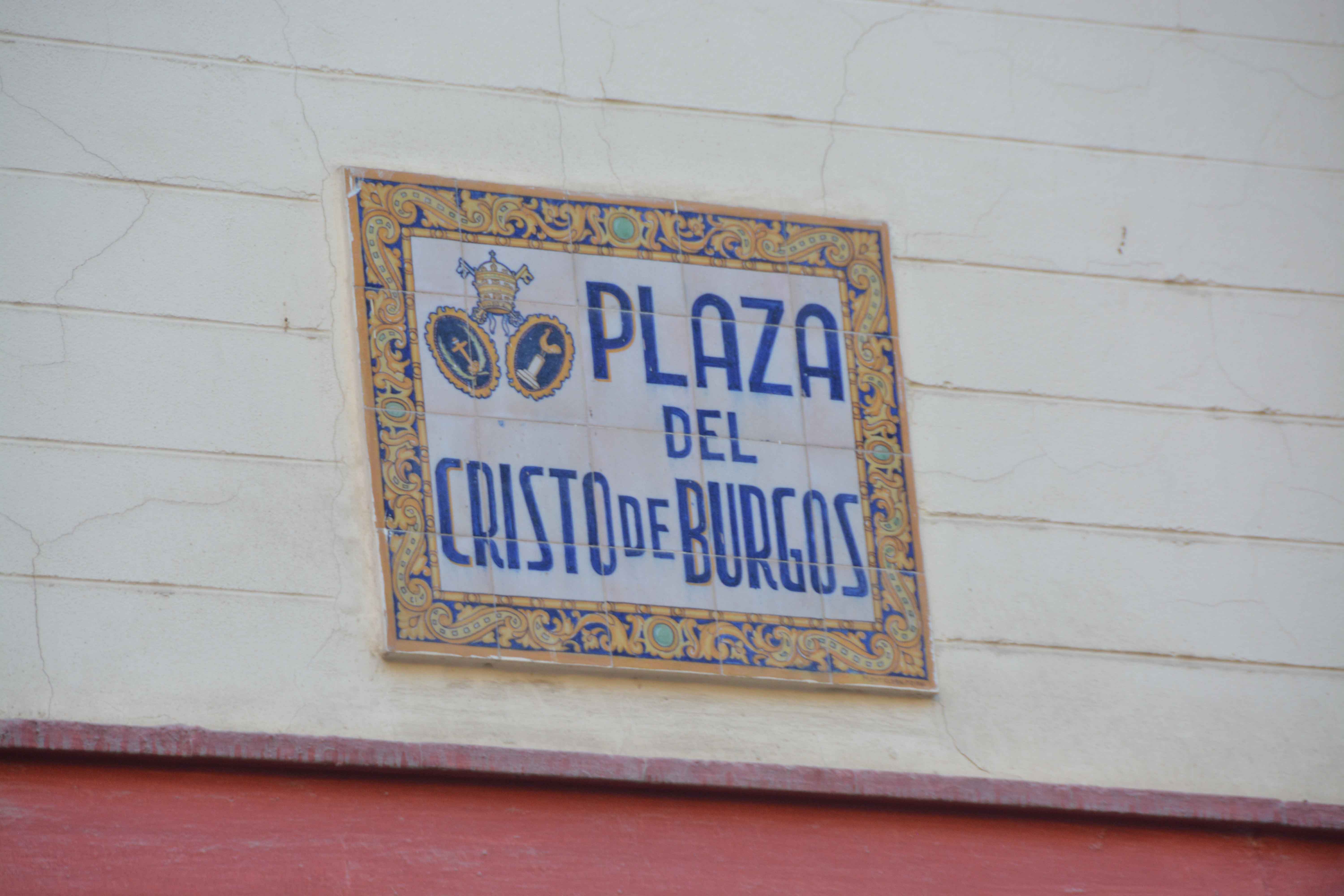
…past the Plaza de Toros de la Maestranza.
We knew we must be near a bull ring because all the bars and cafes we passed were decorated with matador memorabilia, including rather disconcertingly some where with a massive bull’s head stuck reindeer-style to the wall.
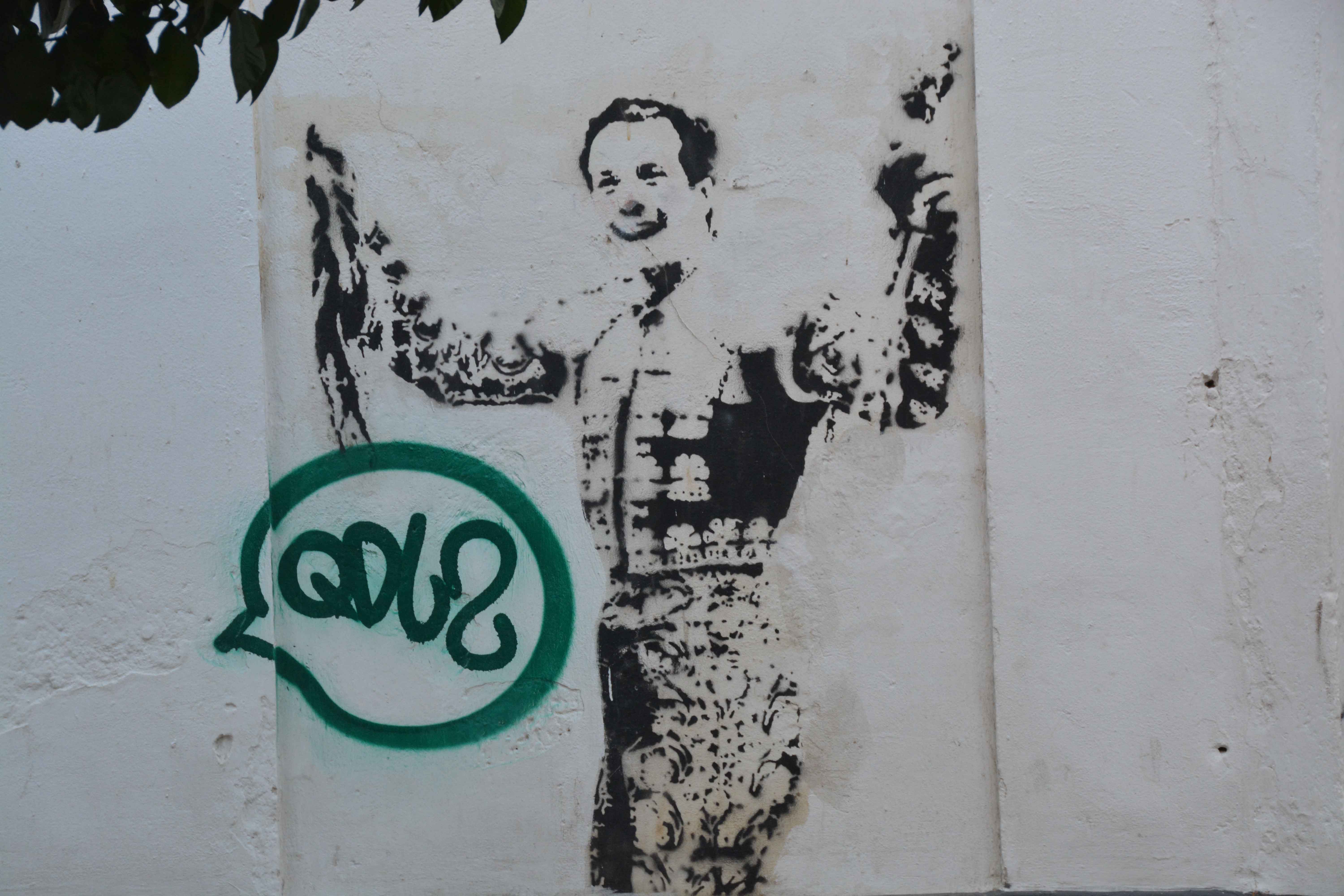
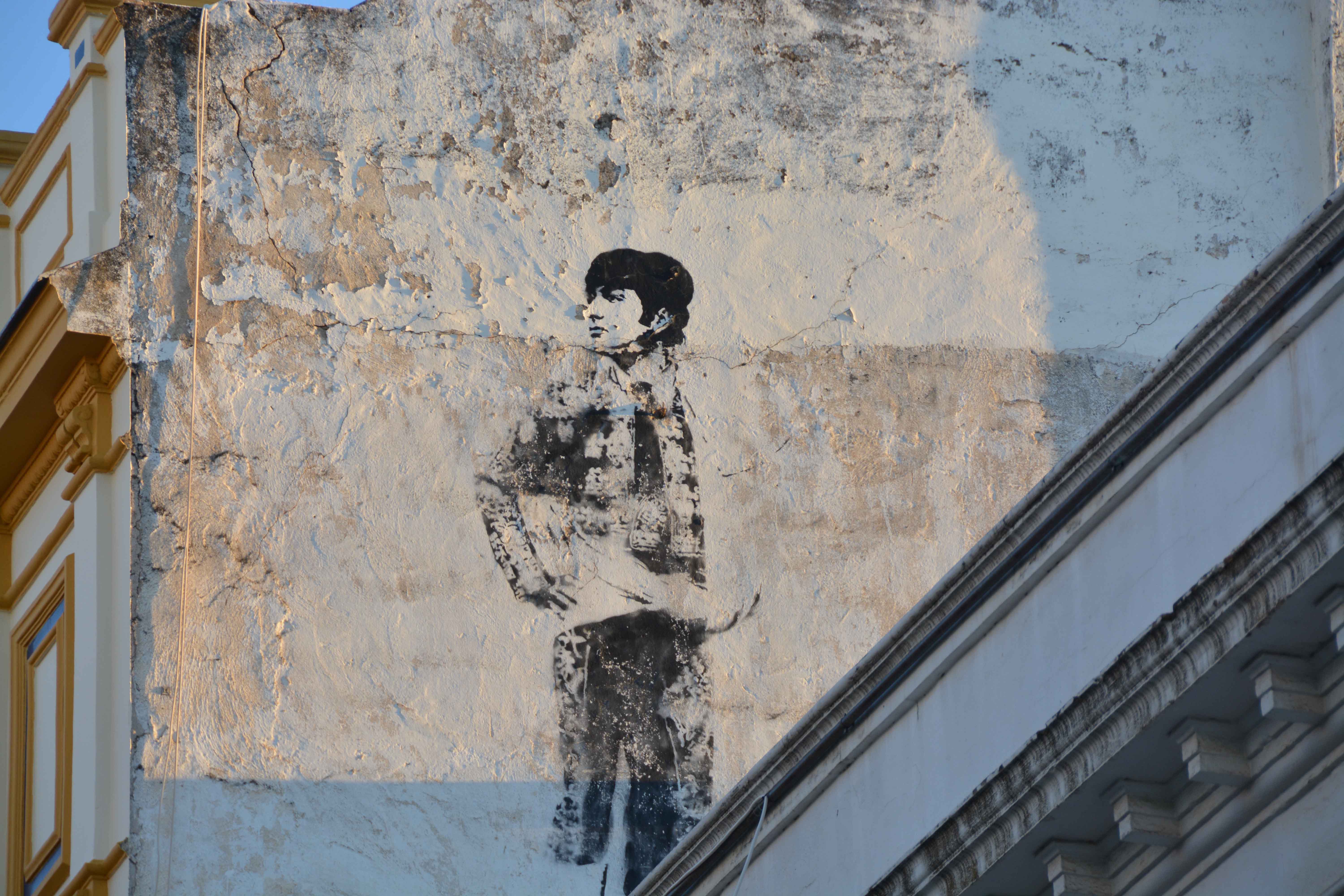
And finally we chose a restaurant filled with Spanish families settling in for a four-hour Sunday lunch. Five flamenco singers busked the tables as we waited for our food, encouraging this young diner to join them and demonstrate his prowess on the guitar while proud mama looks on.
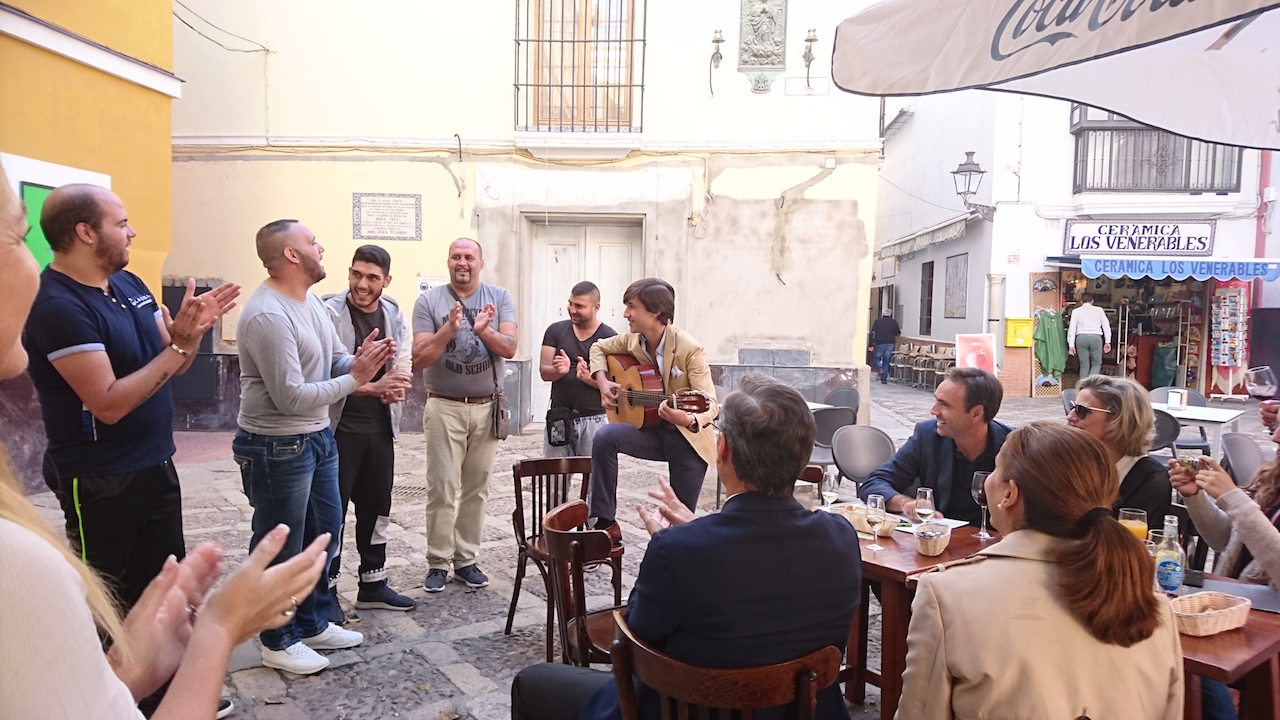

The restaurant was a good choice. This dish of crispy fried aubergine sticks with a salmorejo dip (made of tomatoes, bread and oil) was pretty special. As were the slivers of iberico ham cut from one of these joints..
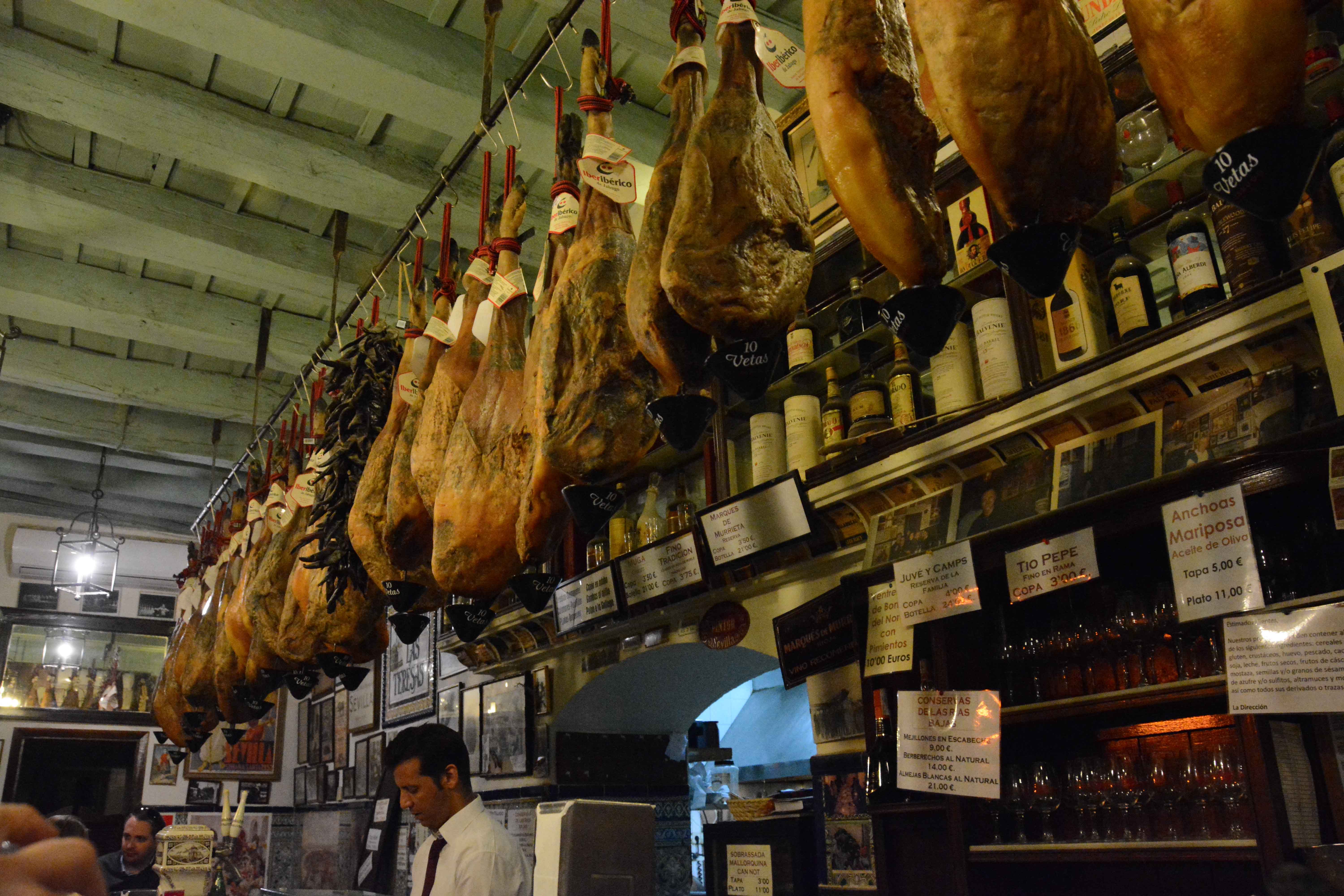
One night in Seville:
We felt we couldn’t leave the city without seeing flamenco.
The Museo Del Baile Flamenco in the Santa Cruz district seemed like a good option. They run one hour shows of flamenco dance, guitar and singing. The venue caters only for 40 or so and so felt quite intimate. There was also the additional bonus of being seated within eavesdropping distance of a Canadian tour guide with her three clients and being able to hear her expert commentary on the art of flamenco.
Sometimes the dancer will feel the ‘duende’ I could hear her advise her charges. (I think it means something like ‘having soul’).
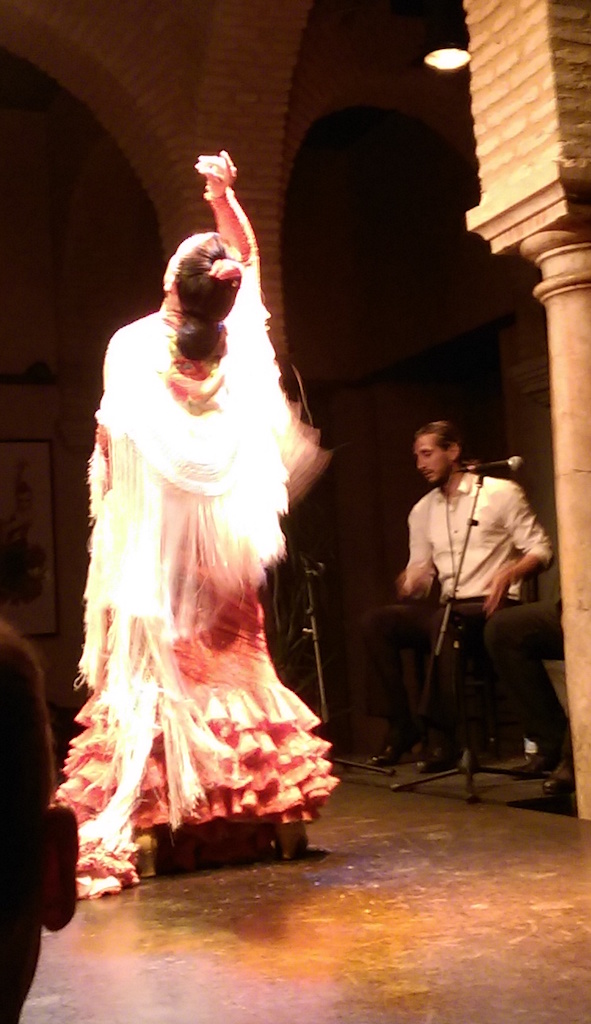
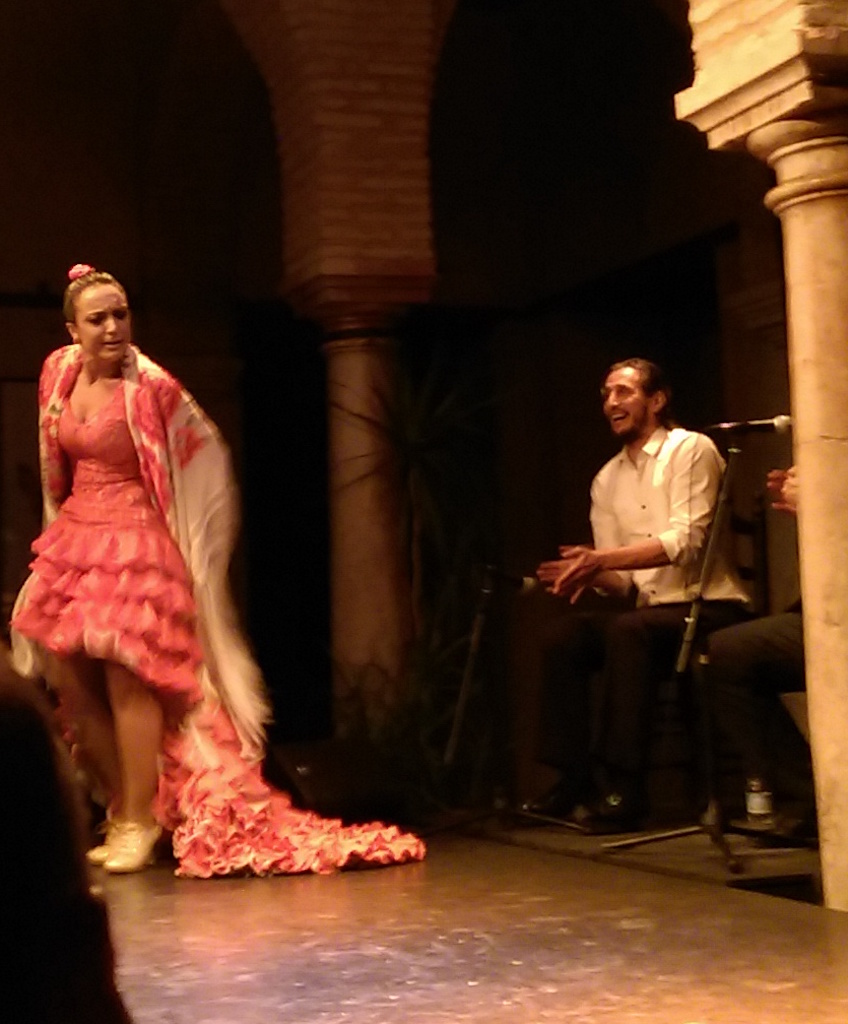
I’m not sure if the savage kicks she gave to the frilled train of her dress to sweep it behind her counts as ‘duende’ but it was stirring stuff to watch close up.
And an additional bonus of seeing the show at the Museo, they threw in a free tour around the Jewish quarter after the show. Our guide was the charismatic Ismael…
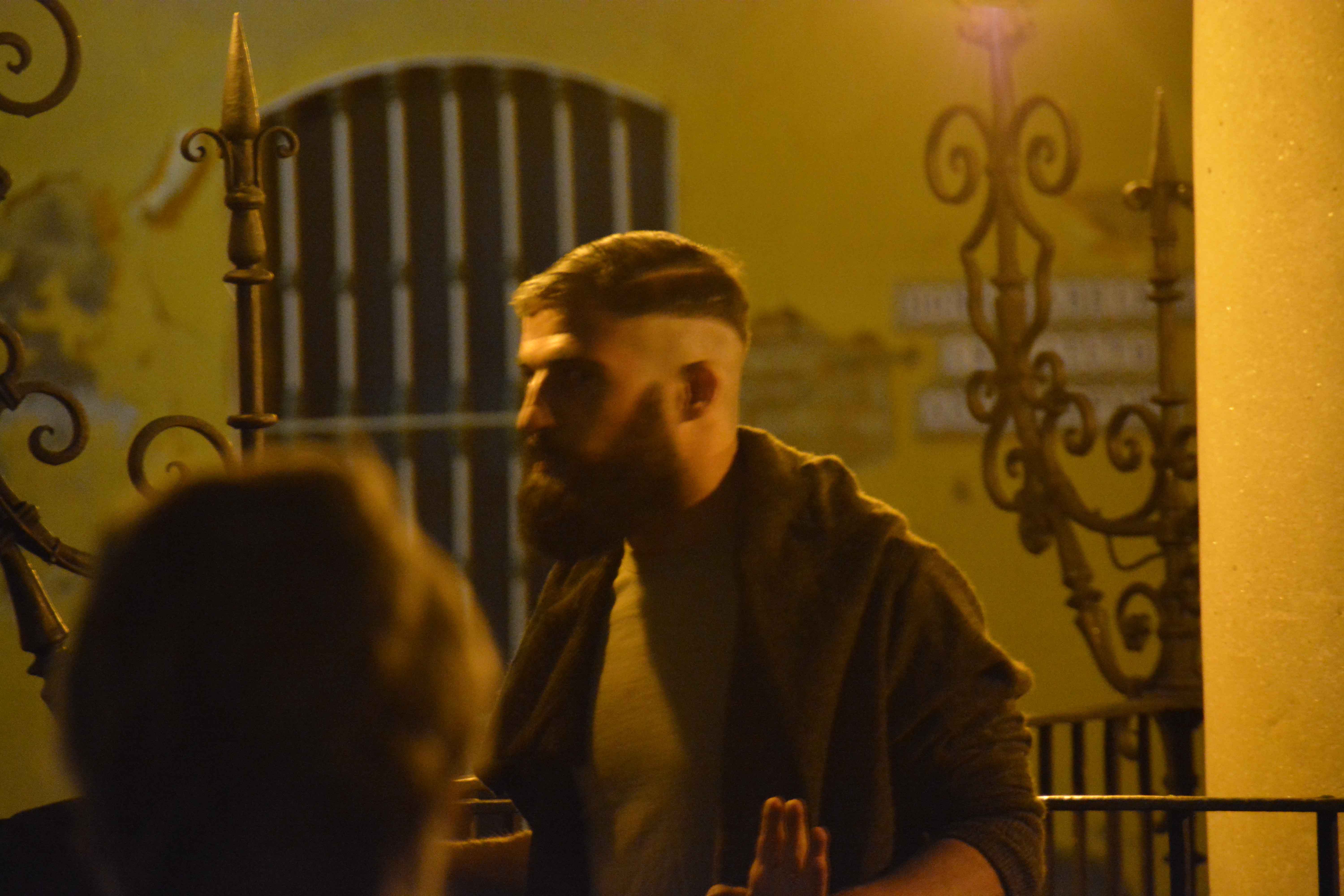
His potted history of Spain was memorable and some facts stood out…like, for example, the Spanish inquisition lasted 400 years and the last execution was in the 1800’s. (Ok – cut me some slack here. It’s just been me and Stuart in the van for the past 7 weeks. I feel the need to share these nuggets I find interesting with someone who hasn’t already heard it!)
And for a night cap, we headed to this bar for more cerveza, vino blanco and tapas…
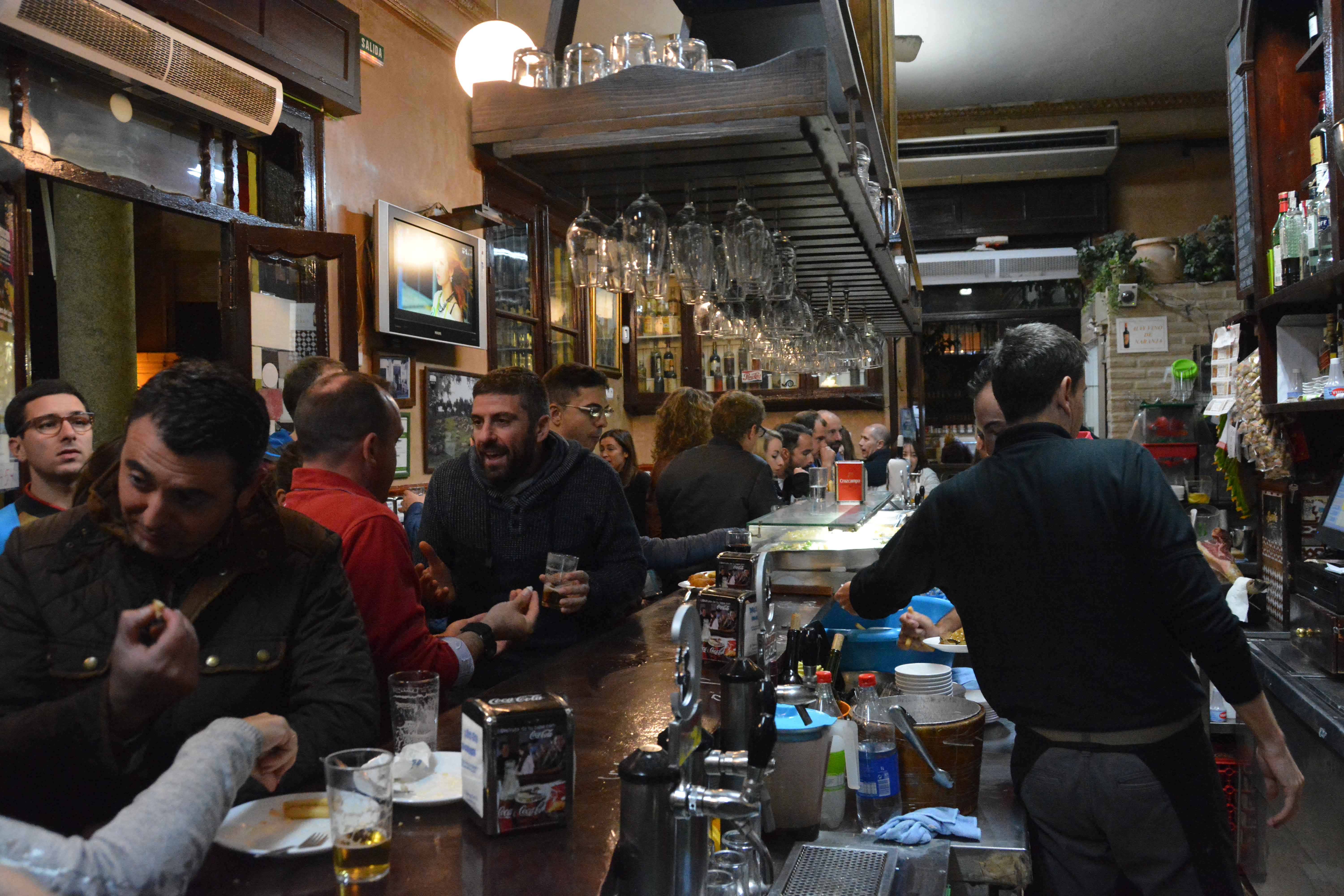
…and this dish was a surprise. It was aubergine, crisp fried, but deliciously sweet from a coating of honey.
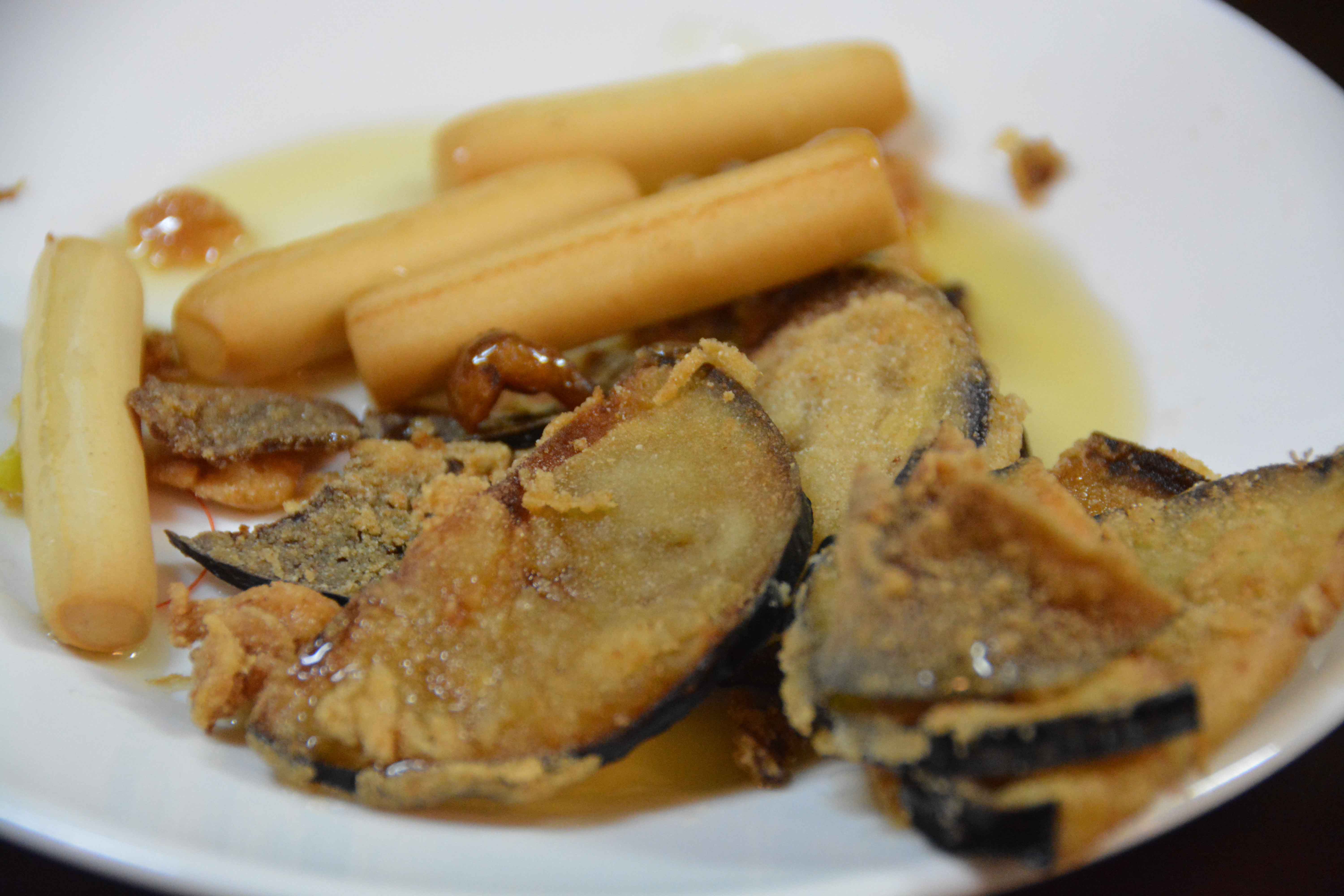
When not either a) eating b) drinking or c) papping people’s wedding shoots, I did a solo visit to Seville Cathedral and joined the lines of people taking selfies with Christopher Columbas…that’s apparently his tomb.
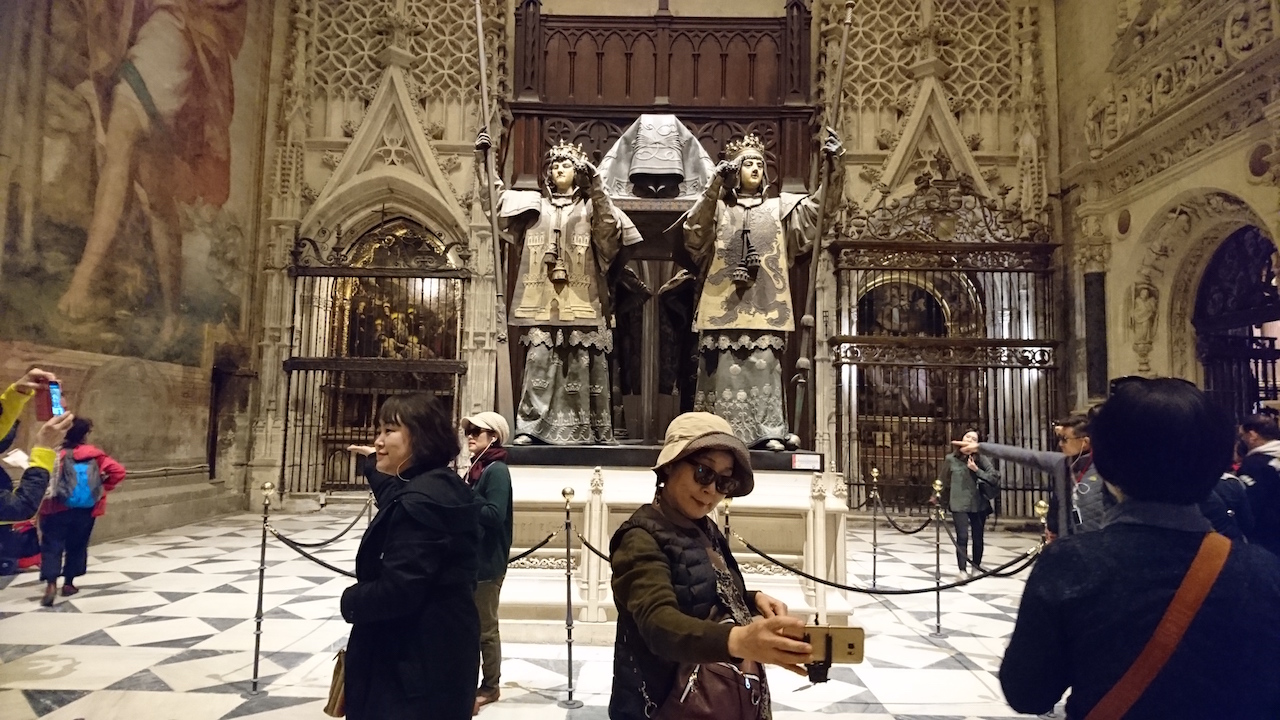 And we both visited the Alcazar palace…
And we both visited the Alcazar palace…
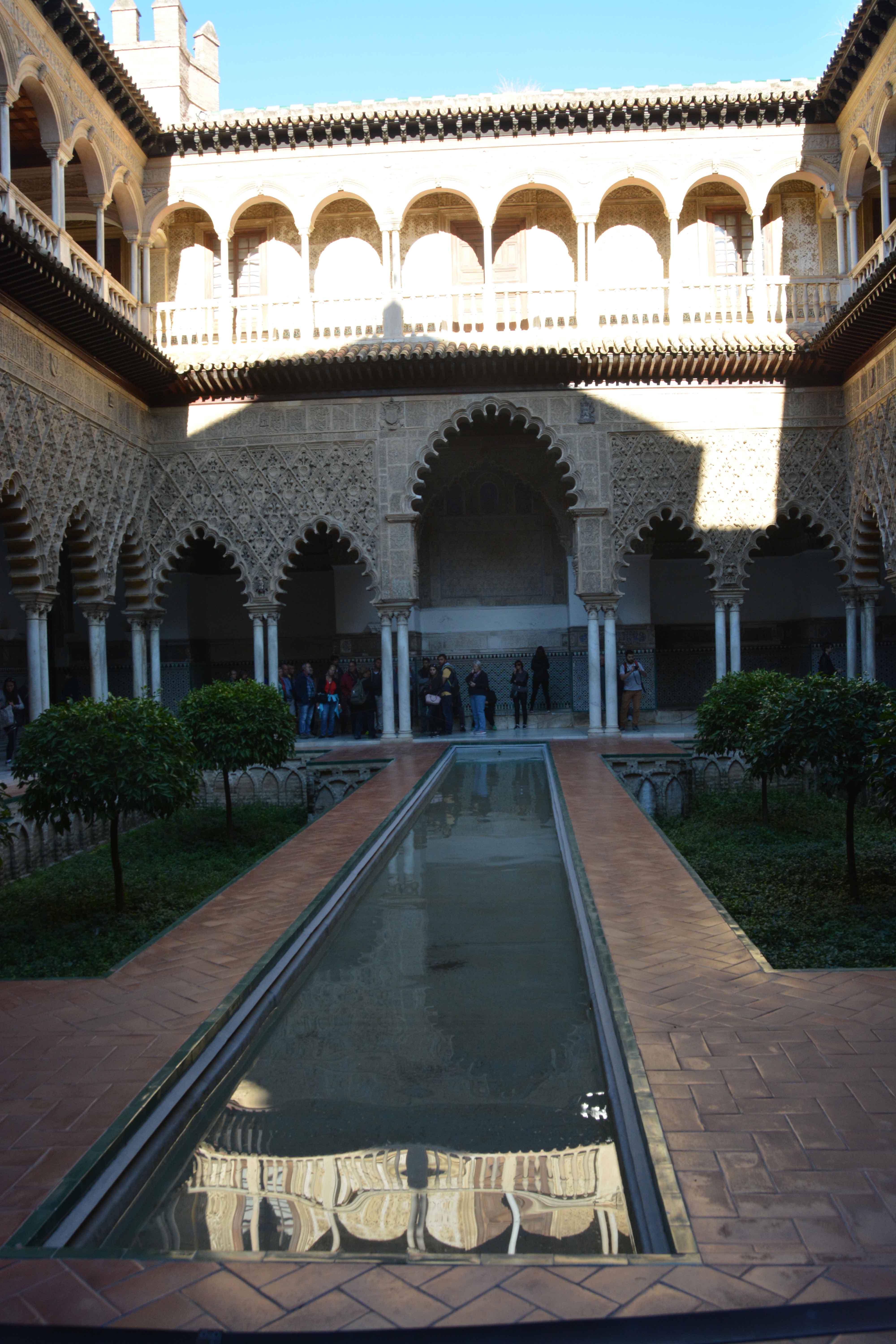 And Stuart wanted to include this photo for reasons best known to himself…
And Stuart wanted to include this photo for reasons best known to himself…

El Rocio – a town for horses:
It was at a campsite near Bilbao, at the start of our trip, that we first heard of El Rocio. In the chitchat at the communal dishwashing area, a fellow motorhomer chatted about their plans. They wanted to go to a village built on sand which was designed specially for horses.
We were intrigued and decided we had to go there too. This is it…
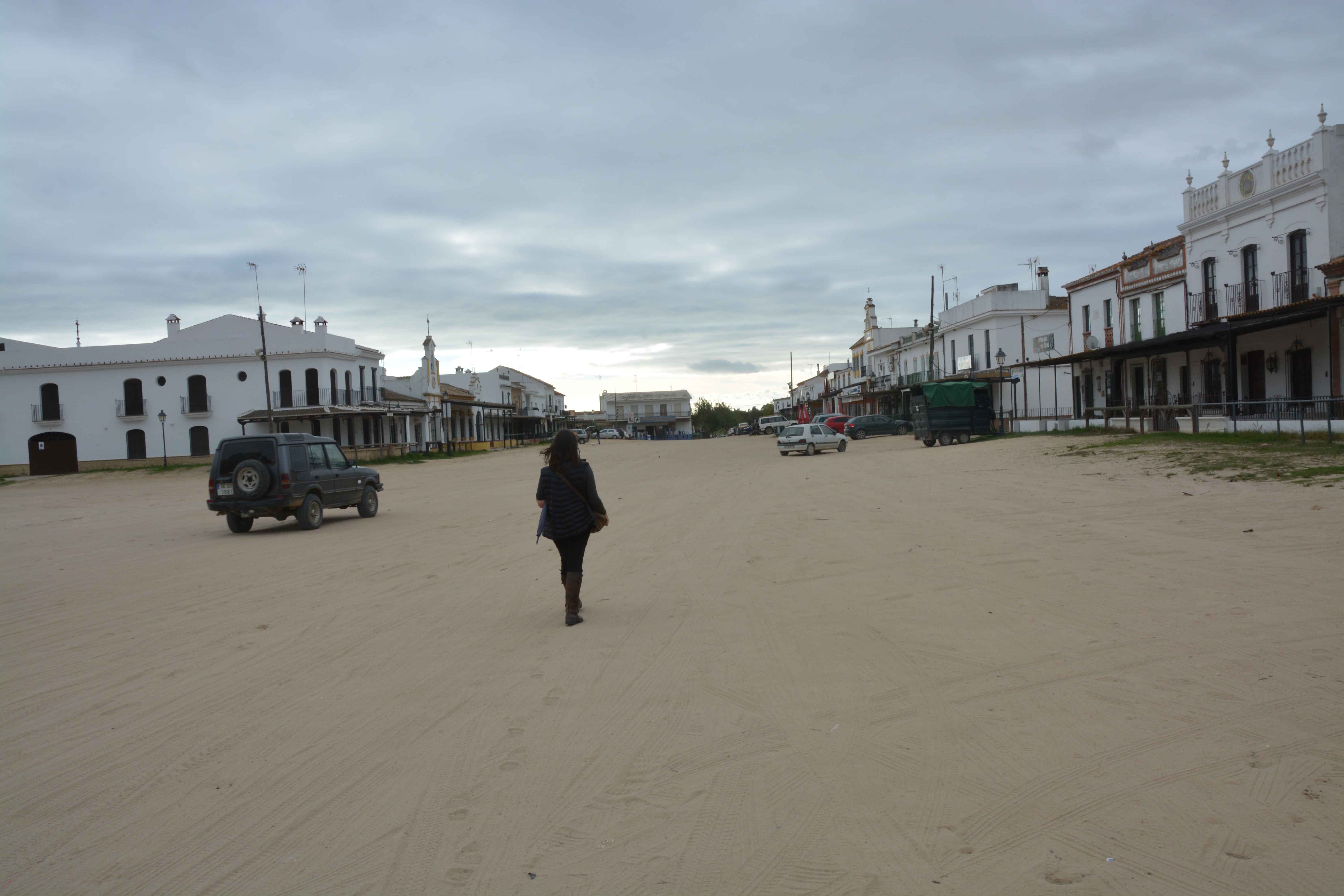
She was right. The streets are filled with sand and every building has a wooden rail outside to tether horses. It has a strange frontier town wild west feel to it.
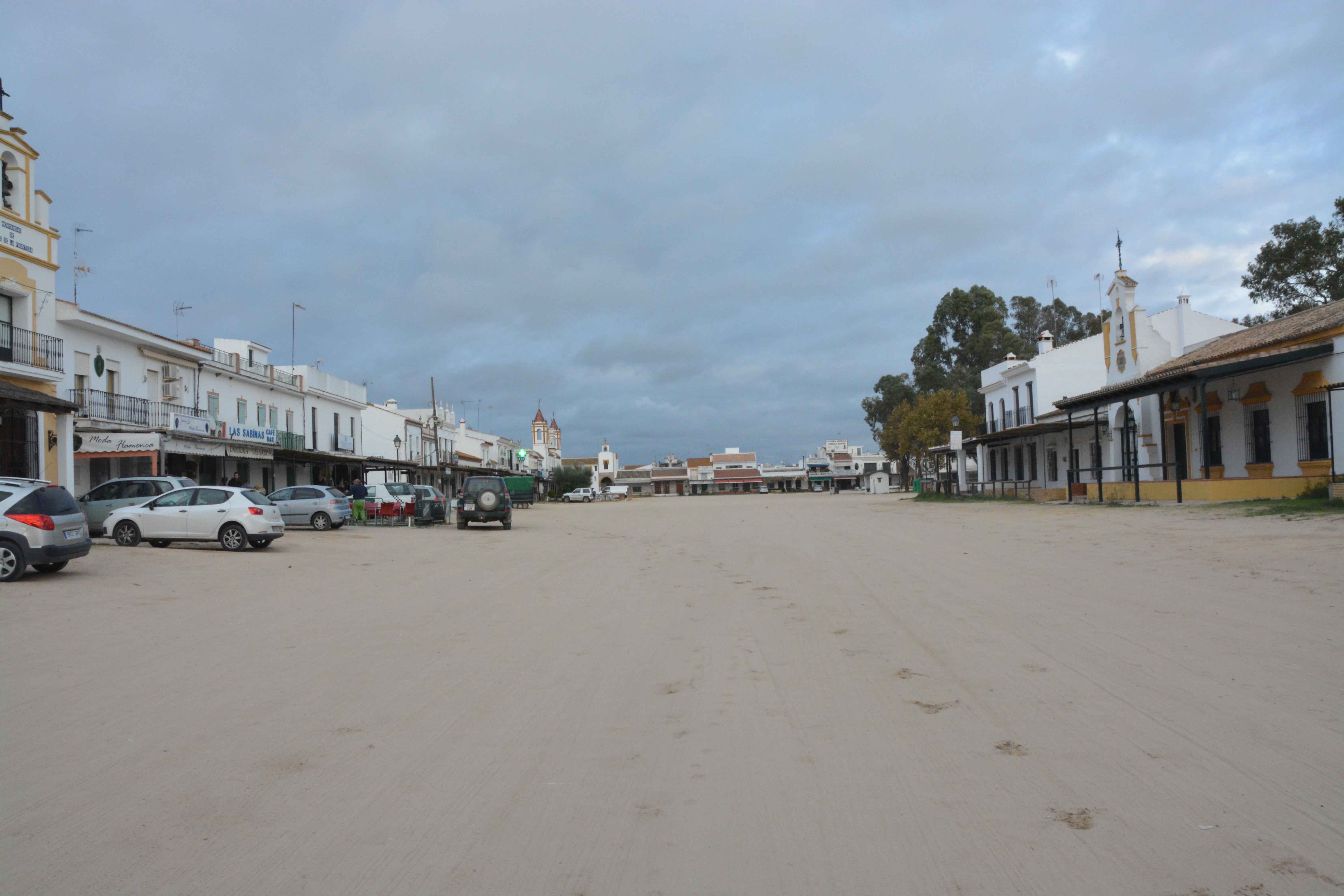
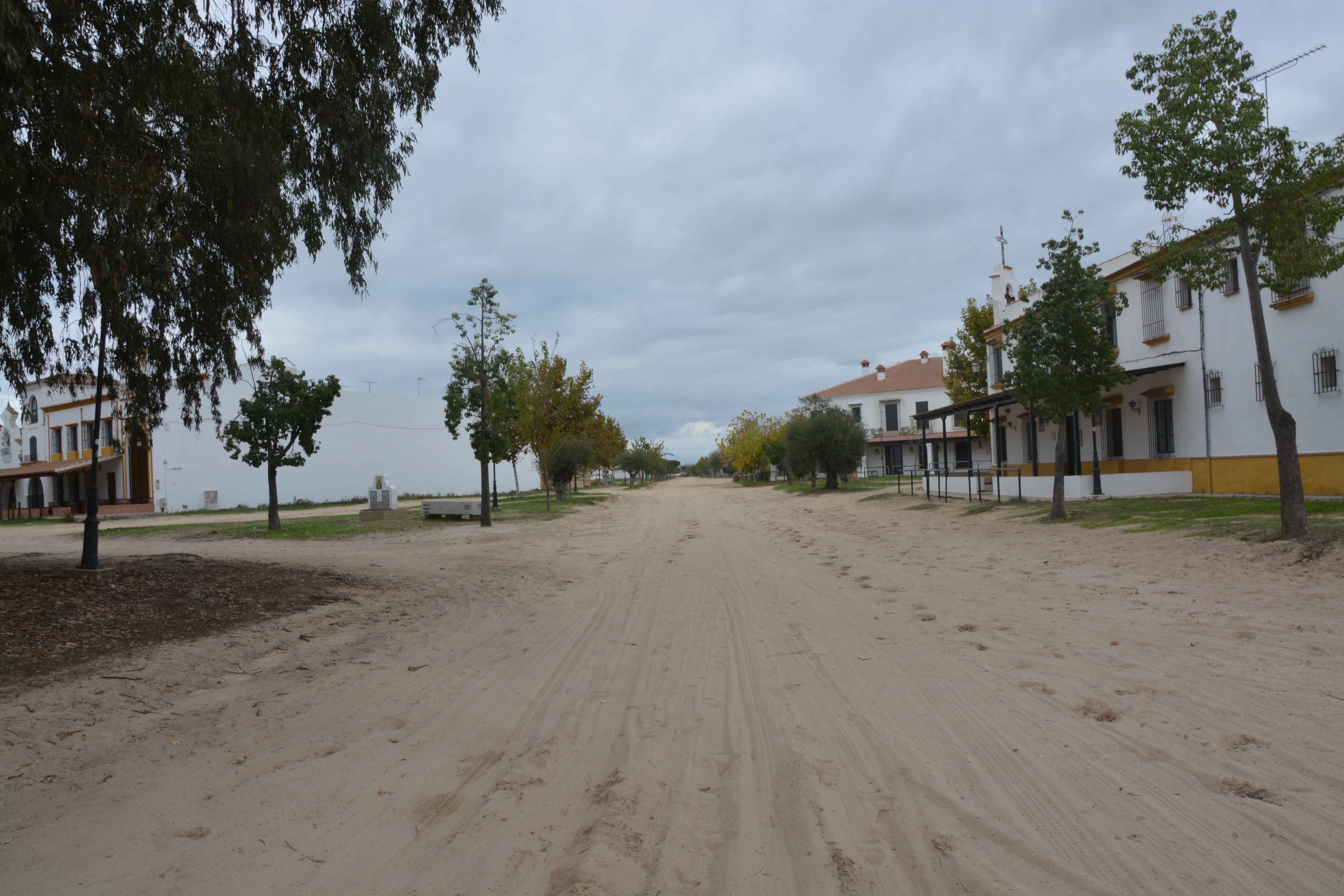
But most of the year it’s empty of people. Then it comes to life after Easter for one of Spain’s biggest festivals. That’s when Catholic brotherhoods come by horseback and wagon on a pilgrimage to see the Virgen Del Rocio in the village’ church.
The pilgrims are all dressed in traditional cowhand clothes and flamenco costumes and they travel for days, crossing the Donana national park wetlands to get here.
It sounds an amazing spectacle and by all accounts is as much about partying as prayer.
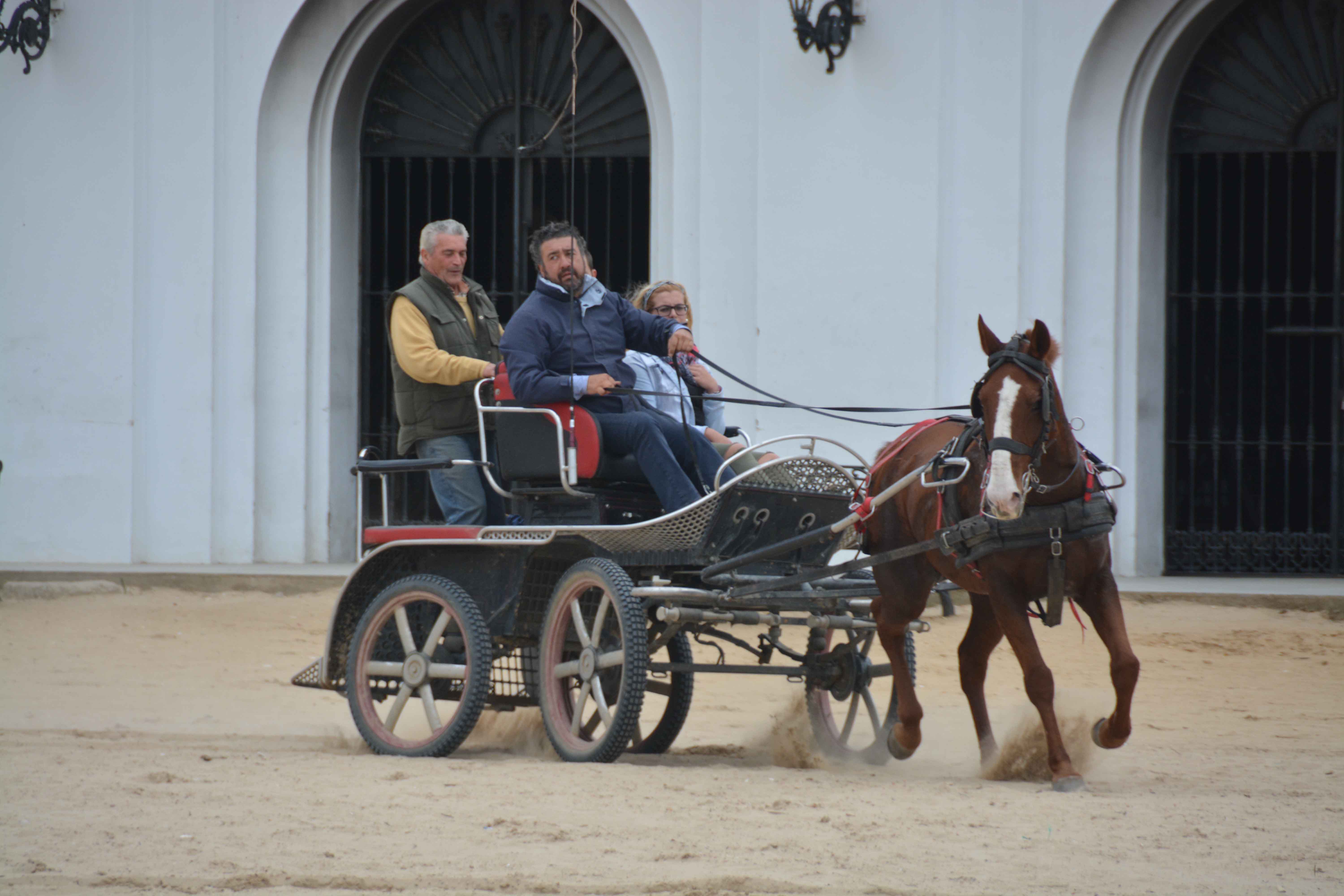
Visiting the church of El Rocio, I came across, yes, yet another bride-to-be (getting married the following week). Here she is photographed at the altar of Virgin.
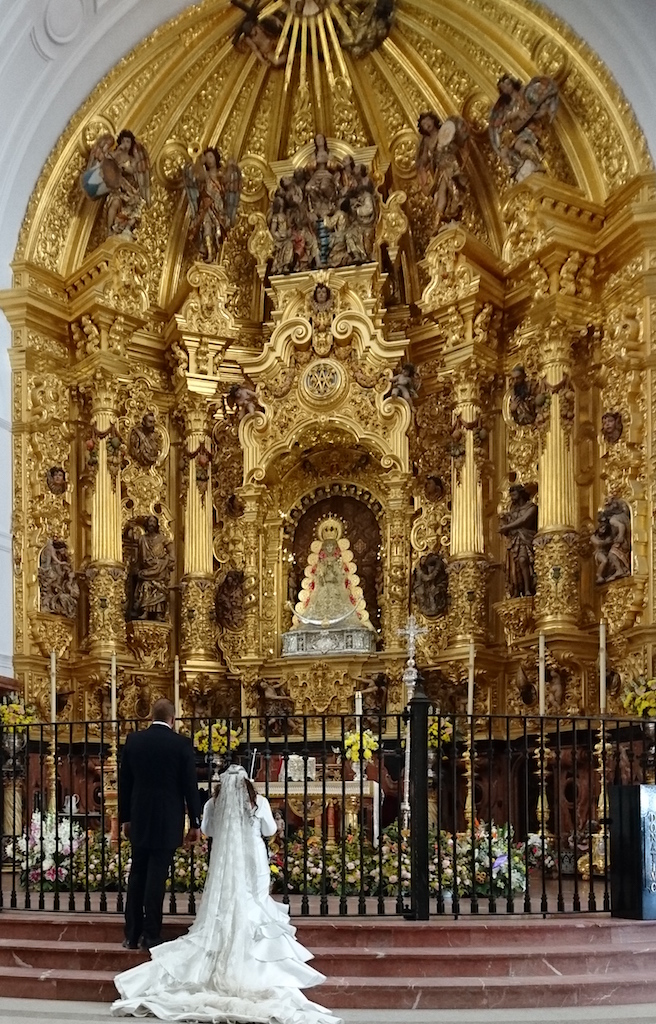
Outside, she was happy to indulge my fascination with Spanish weddings.
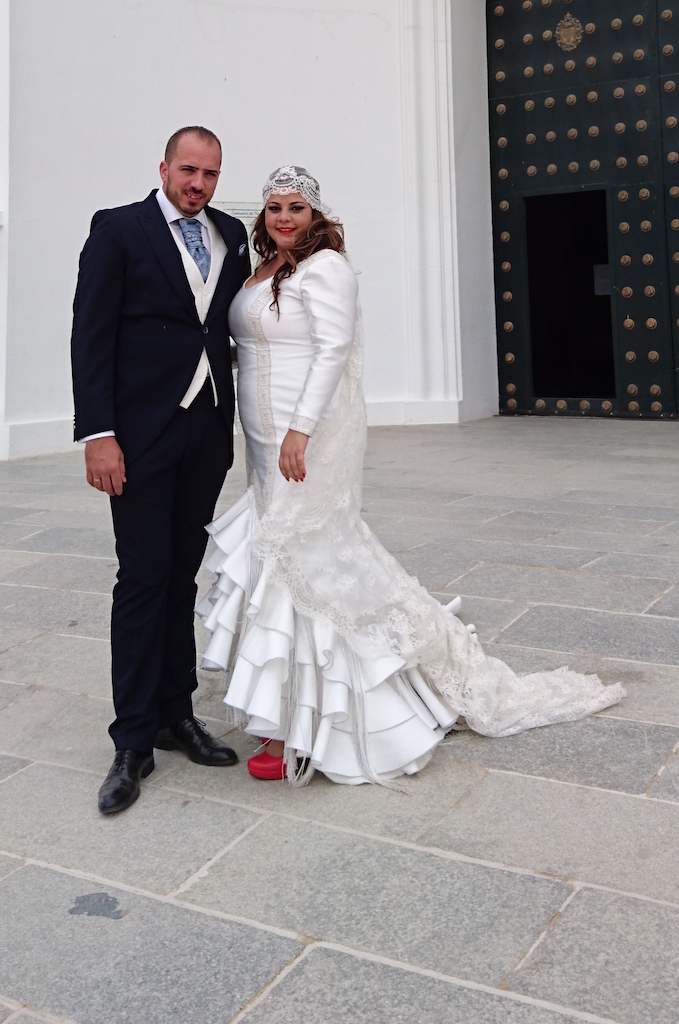
There were no people in El Rocio but next door, the Donana National Park had its fair share of flamingos. It was the closest we got to the park as it is protected very closely and only accessible by organised jeep tour.
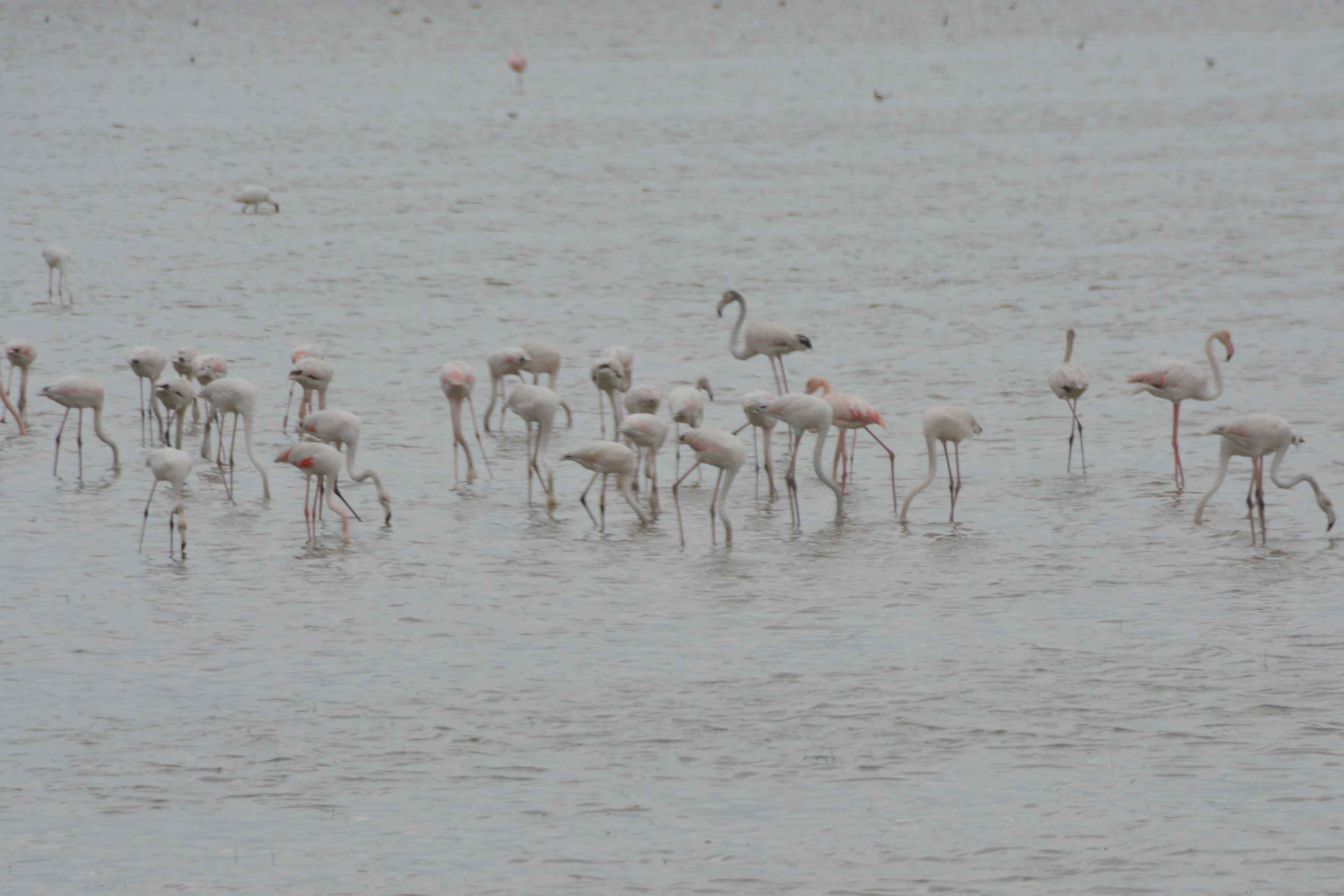
Seeing the red water of the Rio Tinto:
The copper mine at Rio Tinto in Huelva is closed up and deserted now. Here are some photos which show the legacy of 80 years of open cast mining by the British-owned company…
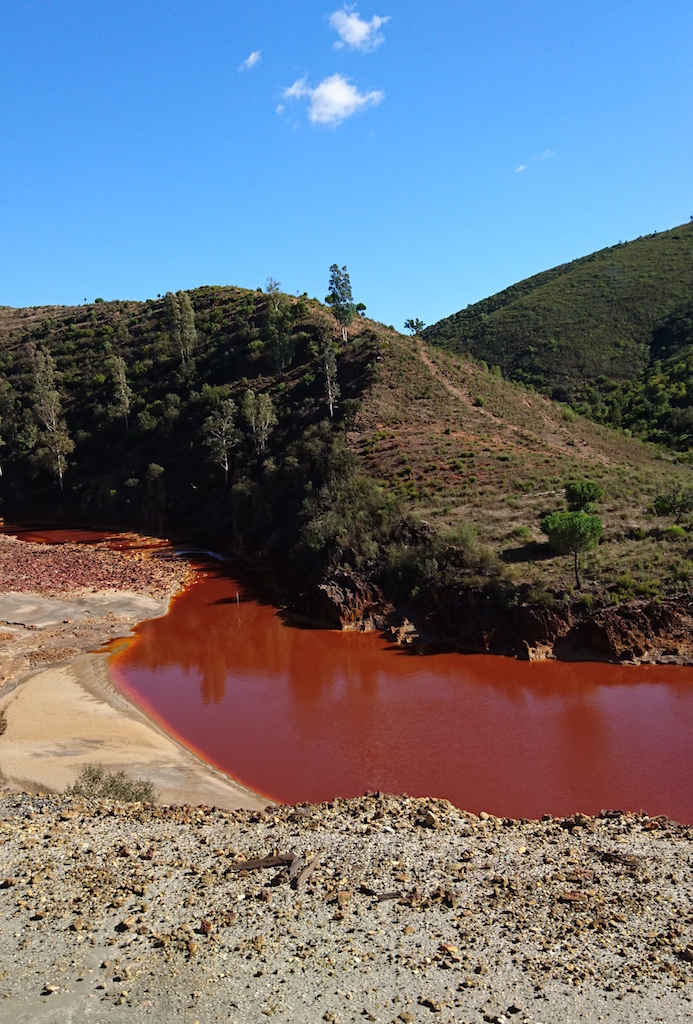
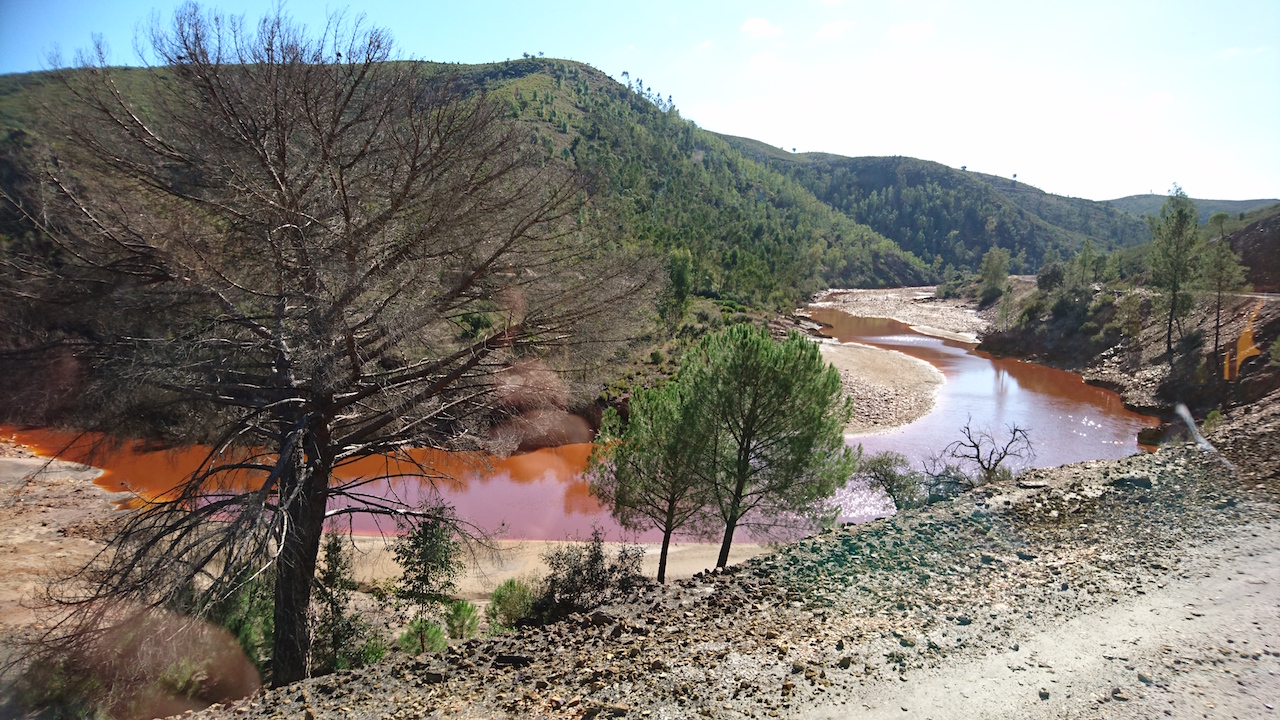
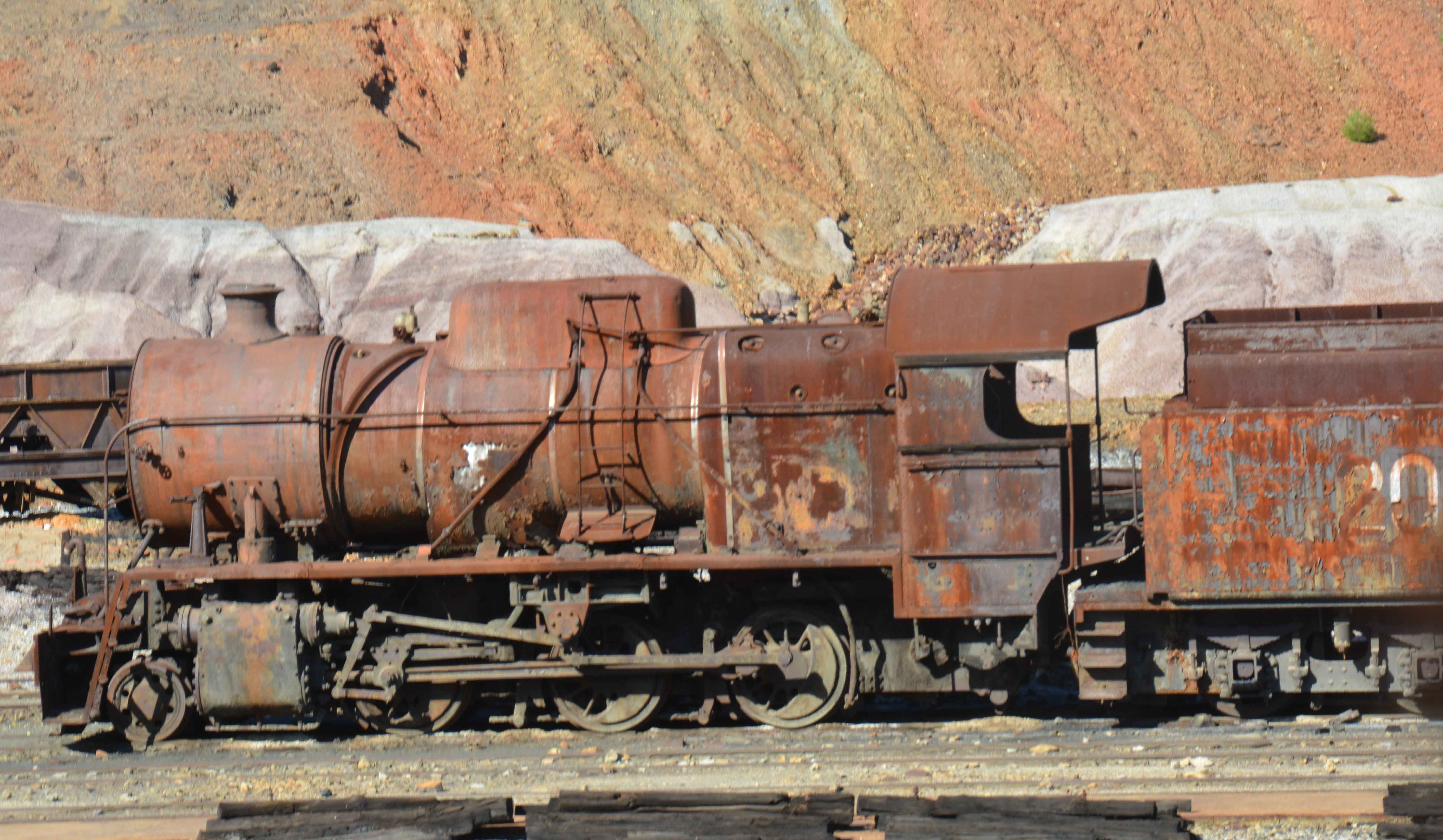
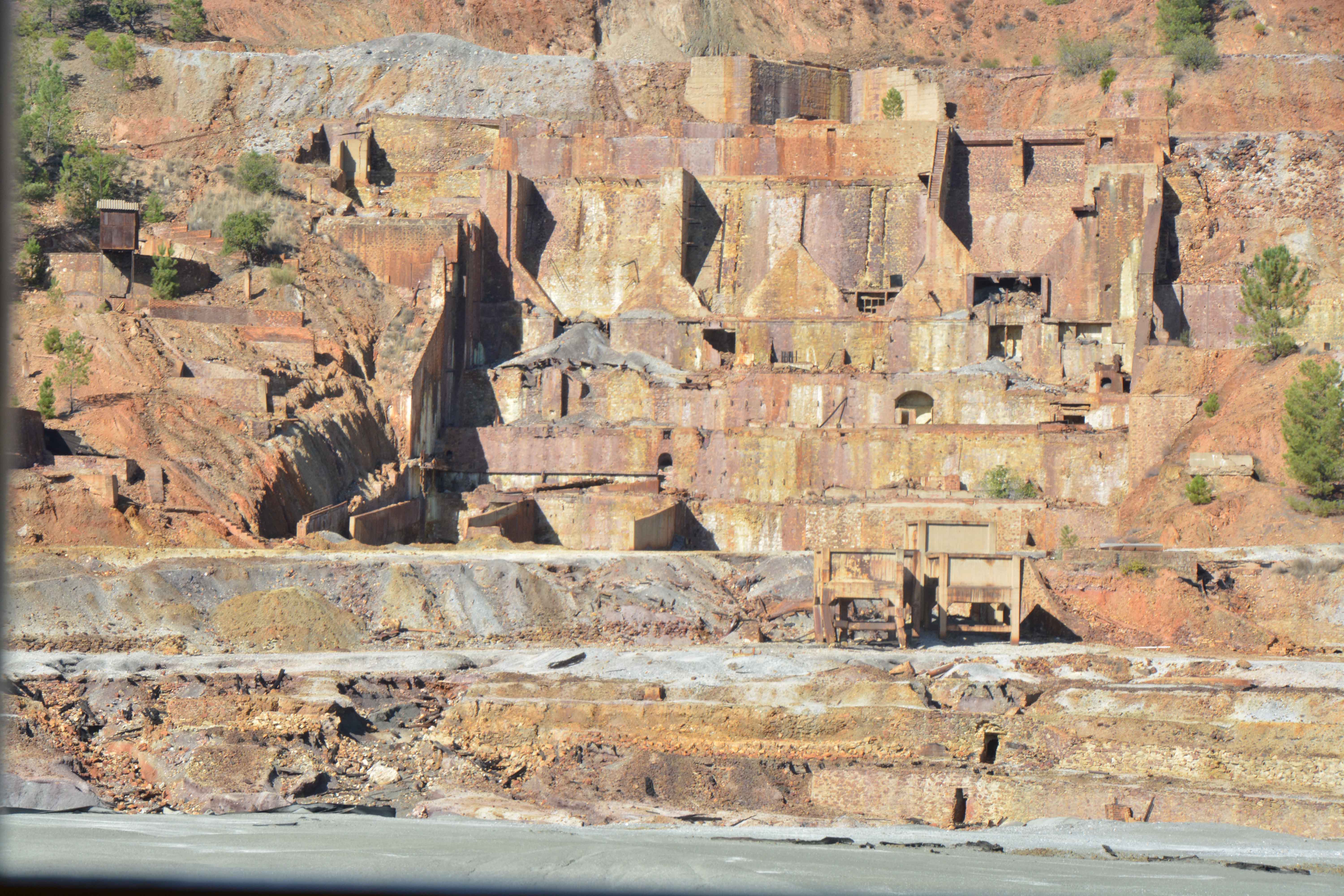
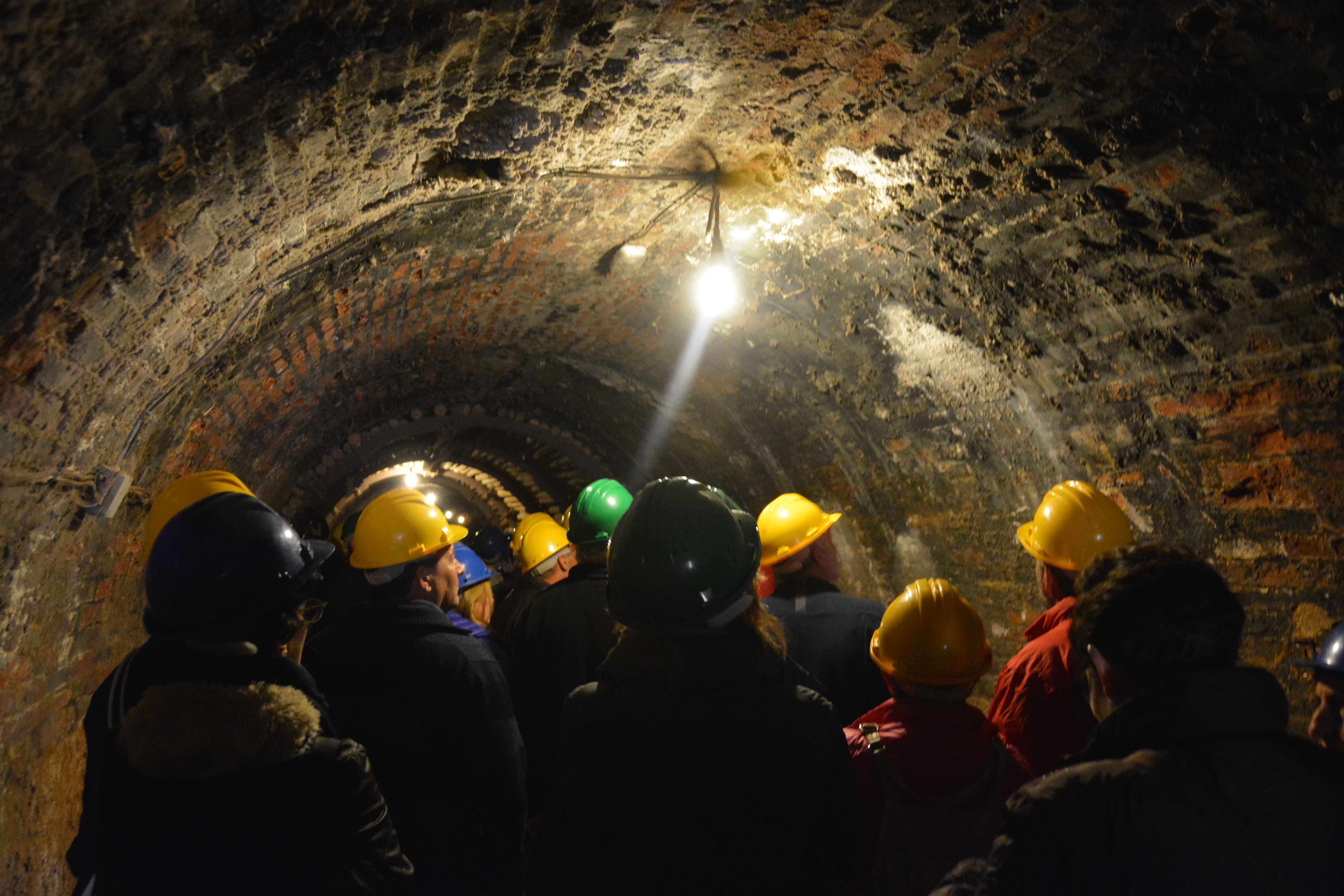
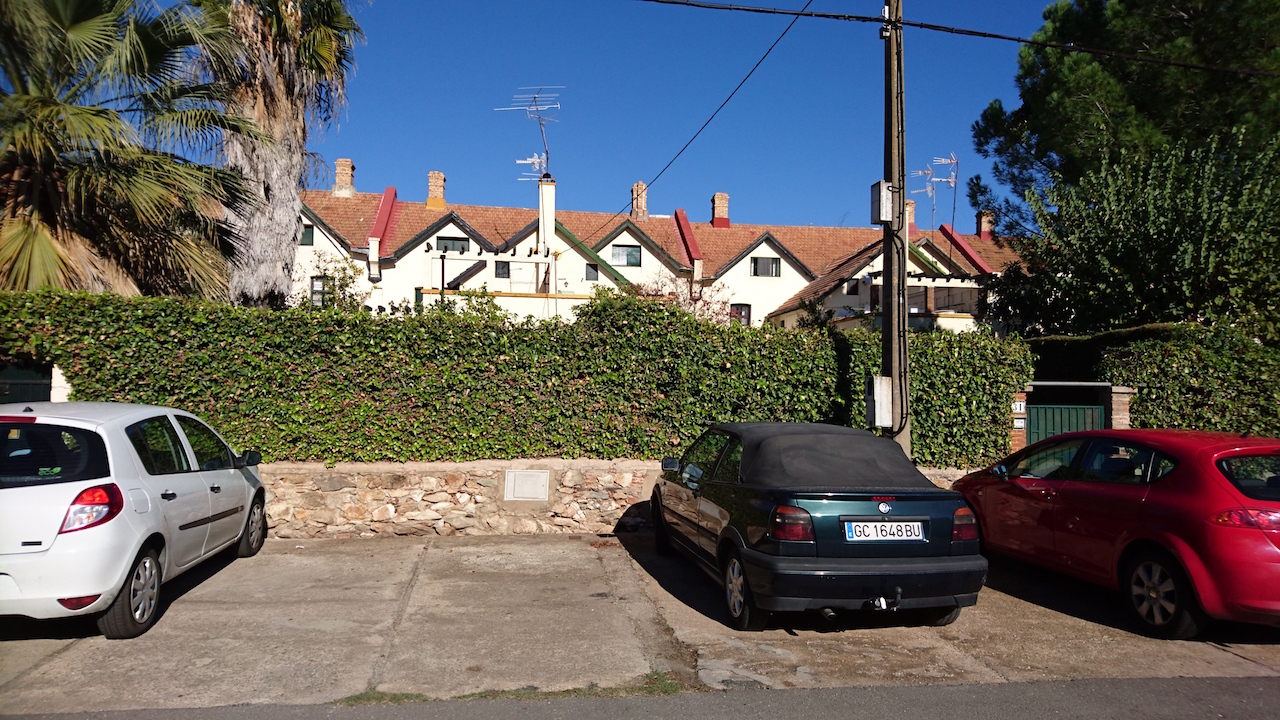
And no, the photo above is not a stray from my gallery of favourite Surrey suburbs.
This is a snap of some of the houses in the Rio Tinto’s Bella Vista area. That’s the Barrio Ingles or English district which was constructed in the late 19th century for Rio Tinto’s expat engineers.
The houses were built with their backs facing the town, clustered around tennis courts and a village green. It was quite bizarre to see them – like a corner of Esher swept up in a vortex and dumped into Huelva.
And finally, we ended the week in Jerez, sampling fino sherry wine at the Sandemans bodega …
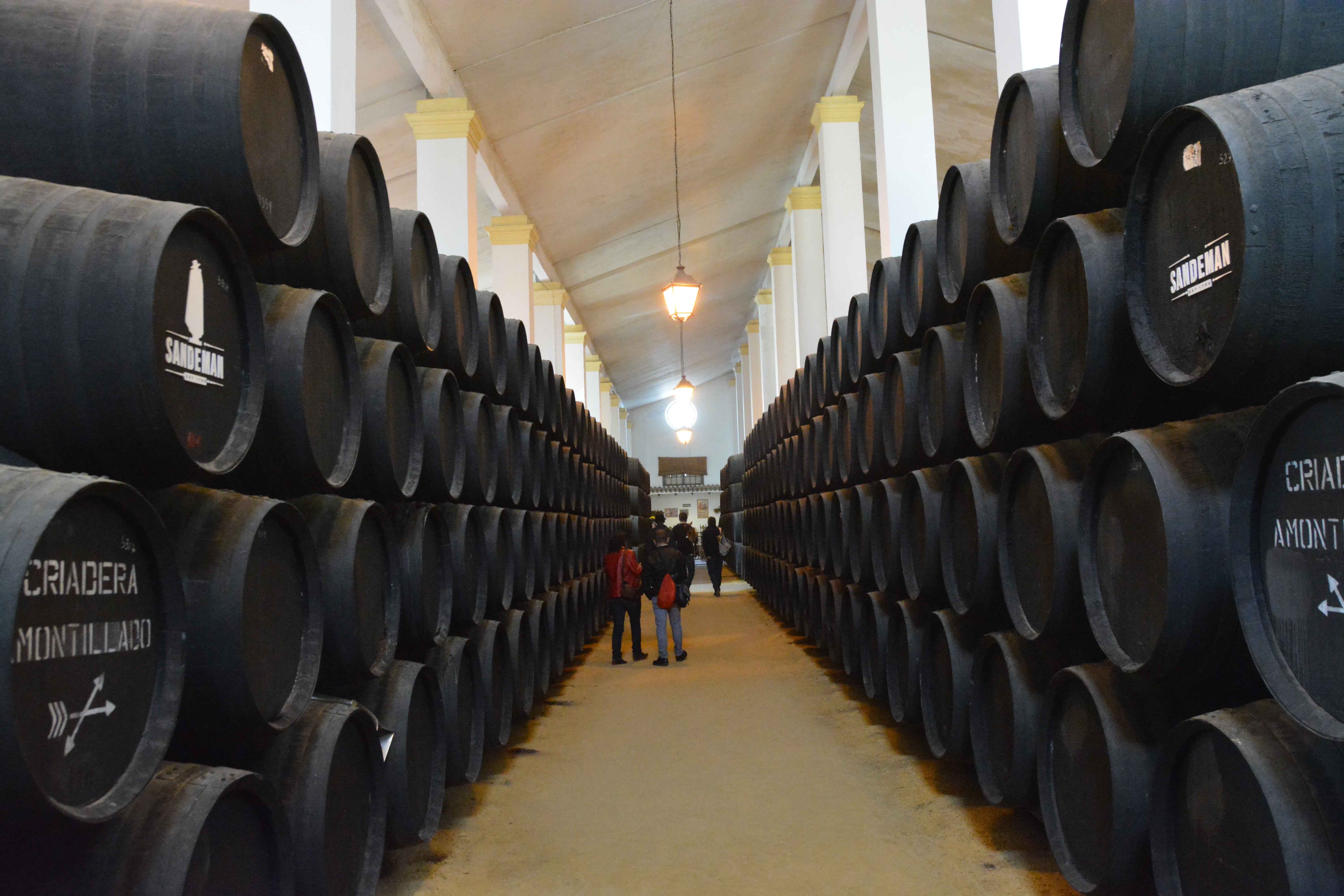
…and we went to see the Andalusian horses dance at the Royal Andalusian School of Equestrian Art in Jerez.
We weren’t allowed take photos inside but here is one of the riders snapped on his way to the arena.
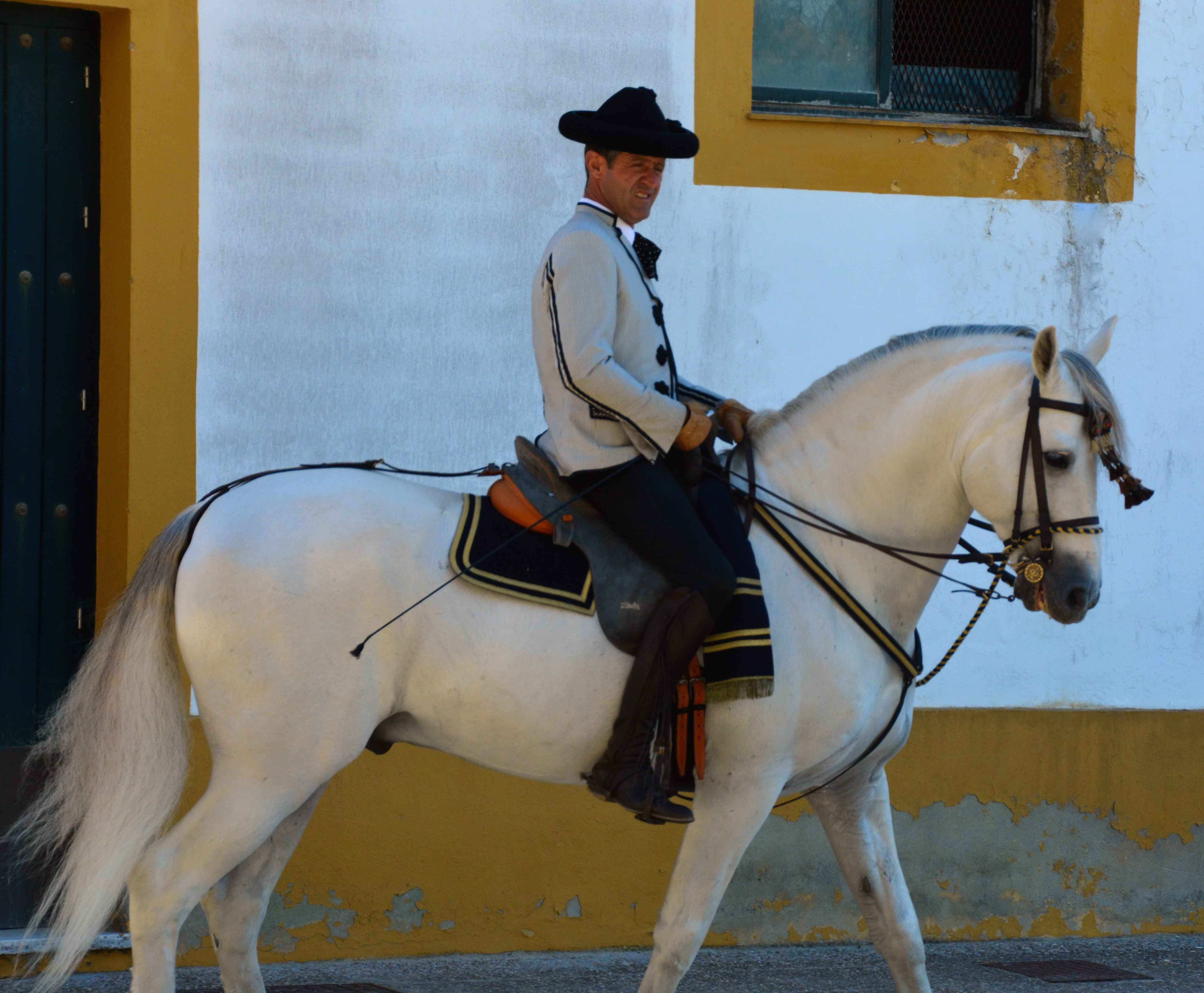
If, like me, you loved watching Charlotte Dujardin in the Olympics dressage, then the choreography of the show would be right up your street.
If, like Stuart, you weren’t too excited at seeing horses jump on their two back legs like kangaroos, then maybe give it a swerve. But he was very pleased to come out from the show and spot this stork nesting on top of the Sandeman building next door to the arena. So here’s this week’s bird photo…
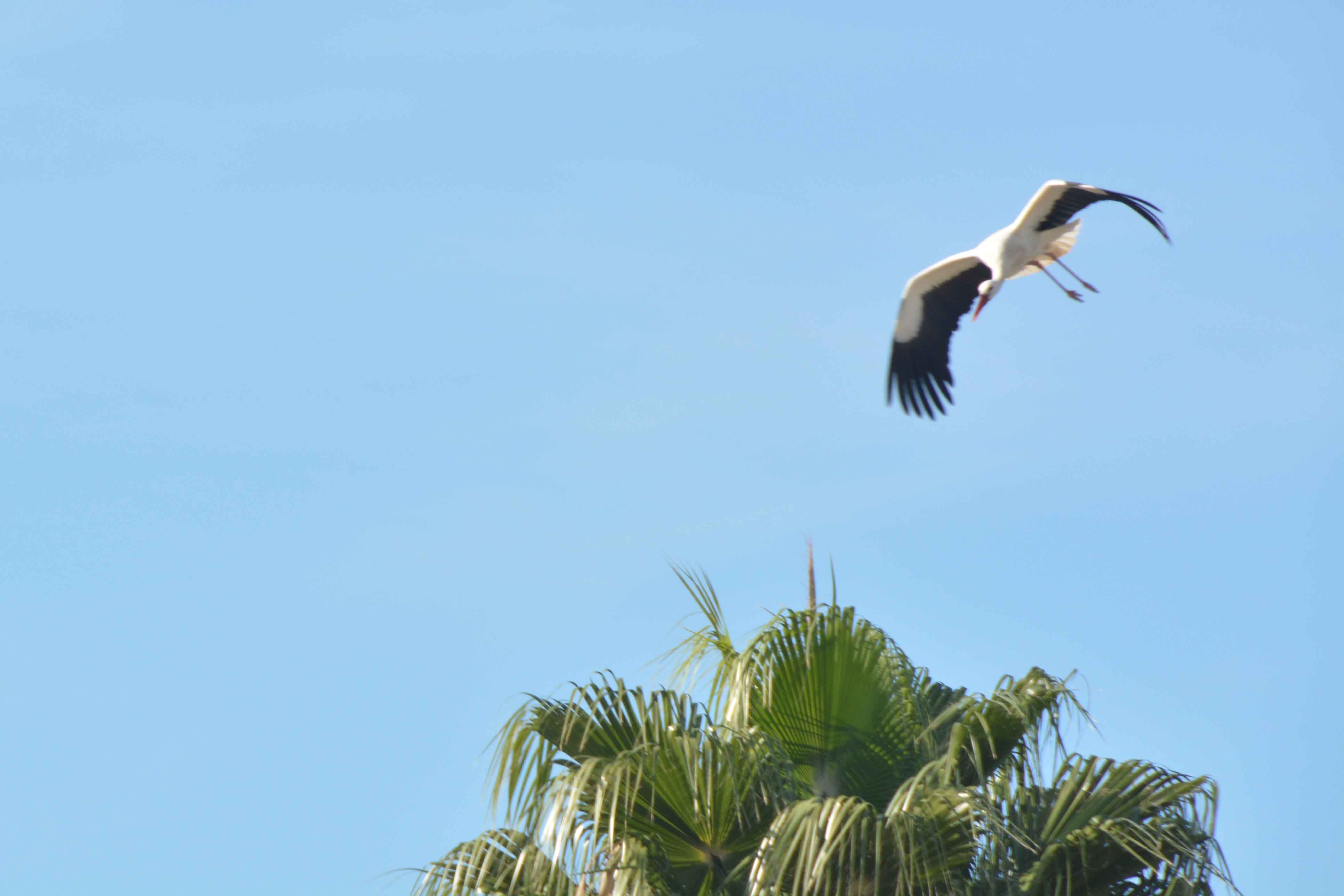
More next week…
